It can be overwhelming when deciding what flowers and shrubs to grow in your garden or yard, so you may choose plants based on their visual attractiveness. However, it is also important to consider the needs of a particular plant, such as the amount of sunlight, water, and soil conditions.
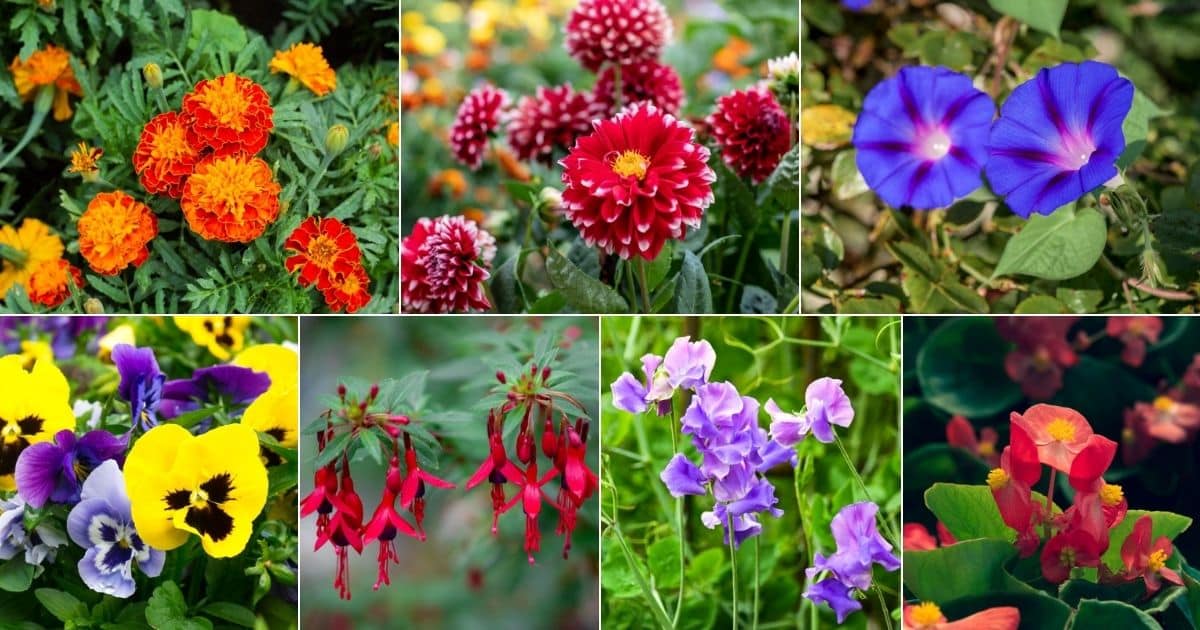
If you are a novice gardener and want more experience getting your green-thumb dirty, a good way is by starting with plants that are low maintenance and easy to grow.
Below you will find a list of 30 of the most popular flowers and shrubs that are so easy to grow that just about anybody can do it with the right information.
Jump to:
- Flowering Shrubs
- 1.) Oak Leaf Hydrangea (Hydrangea quercifolia)
- 2.) Mexican Heather (Cuphea hyssopifolia)
- 3.) American Arborvitae (Thuja occidentalis)
- 4.) Azalea (Rhododendron spp.)
- 5.) Forsythia (Forsythia x intermedia)
- Flowers
- 6.) Shasta Daisy (Leucanthemum x superbum)
- 7.) Lily (Lilium spp.)
- 8.) Tulip (Genus Tulipa)
- 9.) Beach Rose (Rosa rugosa)
- 10.) Lilac (Syringa vulgaris)
- 11.) Leadwort (Ceratostigma plumbaginoides)
- 12.) Lavender (Lavandula spp.)
- 13.) Sunflowers (Helianthus spp.)
- 14.) Zinnia (Zinnia elegans)
- 15.) Marigolds (Tagetes erecta)
- 16.) Cosmos (Cosmos bipinnatus)
- 17.) Morning Glory (Ipomoea purpurea)
- 18.) Sweet Pea (Lathyrus odoratus)
- 19.) Nasturtium (Tropaeolum majus)
- 20.) Snapdragons (Antirrhinum majus)
- 21.) Fuchsia (Fuchsia magellanica)
- 22.) Geraniums (Pelargonium)
- 23.) Dahlias (Dahlia pinnata)
- 24.) Ornamental Onions (Allium schubertii)
- 25.) Daffodils (Narcissus)
- 26.) Daylilies (Hemerocallis fulva)
- 27.) Lupines (Lupinus)
- 28.) Wax Begonias (Begonia x semperflorens-cultorum)
- 29.) Pansies (Viola tricolor var. hortensis)
- 30.) Impatiens (Impatiens balsamina)
- 31.) Carnation (Dianthus caryophyllus)
- Frequently Asked Questions (FAQ)
- Takeaway
Flowering Shrubs
1.) Oak Leaf Hydrangea (Hydrangea quercifolia)
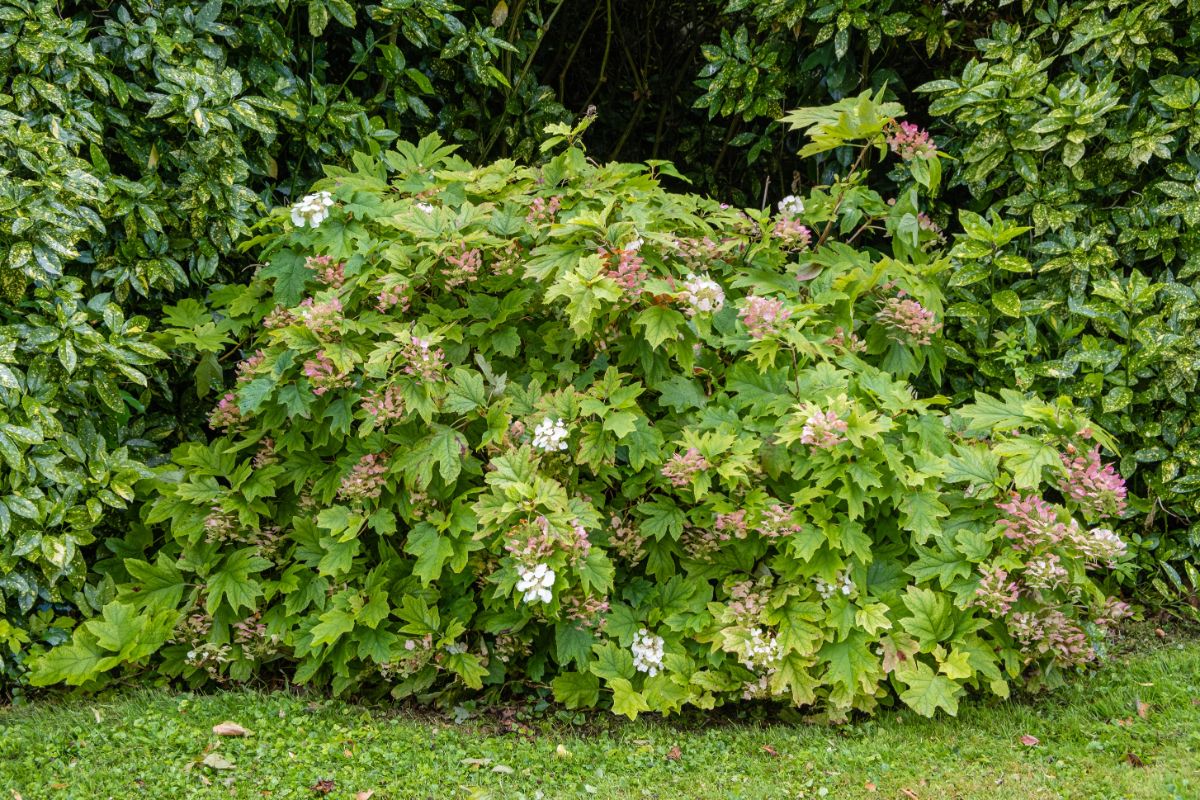
| Plant Type | Flowering deciduous shrub |
| Native Region | Southeastern USA |
| Sun/ Light | Full sun / partial shade |
| Hardiness Zone | 5-9, USDA |
| Water | Moderate |
| Soil | Rich, evenly moist, well-drained |
| Blooms | May-July |
| Foliage Color | Green, red, rust, purple |
| Flower Color | White to purplish-pink |
| Size | Height: 4-8 ft. tall |
| When to Plant Seeds | Late autumn to early spring |
Interesting fact: The oak leaf hydrangea’s leaves turn from green to shades of red and purple in the autumn and can last well into the winter.
2.) Mexican Heather (Cuphea hyssopifolia)

| Plant Type | Flowering evergreen shrub (may be annual or perennial) |
| Native Region | Central Mexico |
| Sun/ Light | Full sun / partial shade |
| Hardiness Zone | 9b-11, USDA |
| Water | Moderate |
| Soil | Sandy, well-drained soil |
| Blooms | Summer (long bloom season) |
| Foliage Color | Green |
| Flower Color | Pink, purple, white |
| Size | Height: 2 ft. |
| When to Plant Seeds | Start seeds indoors 8 to 10 weeks before the last frost |
Interesting fact: Mexican Heather is sometimes also referred to as “false heather”.
3.) American Arborvitae (Thuja occidentalis)
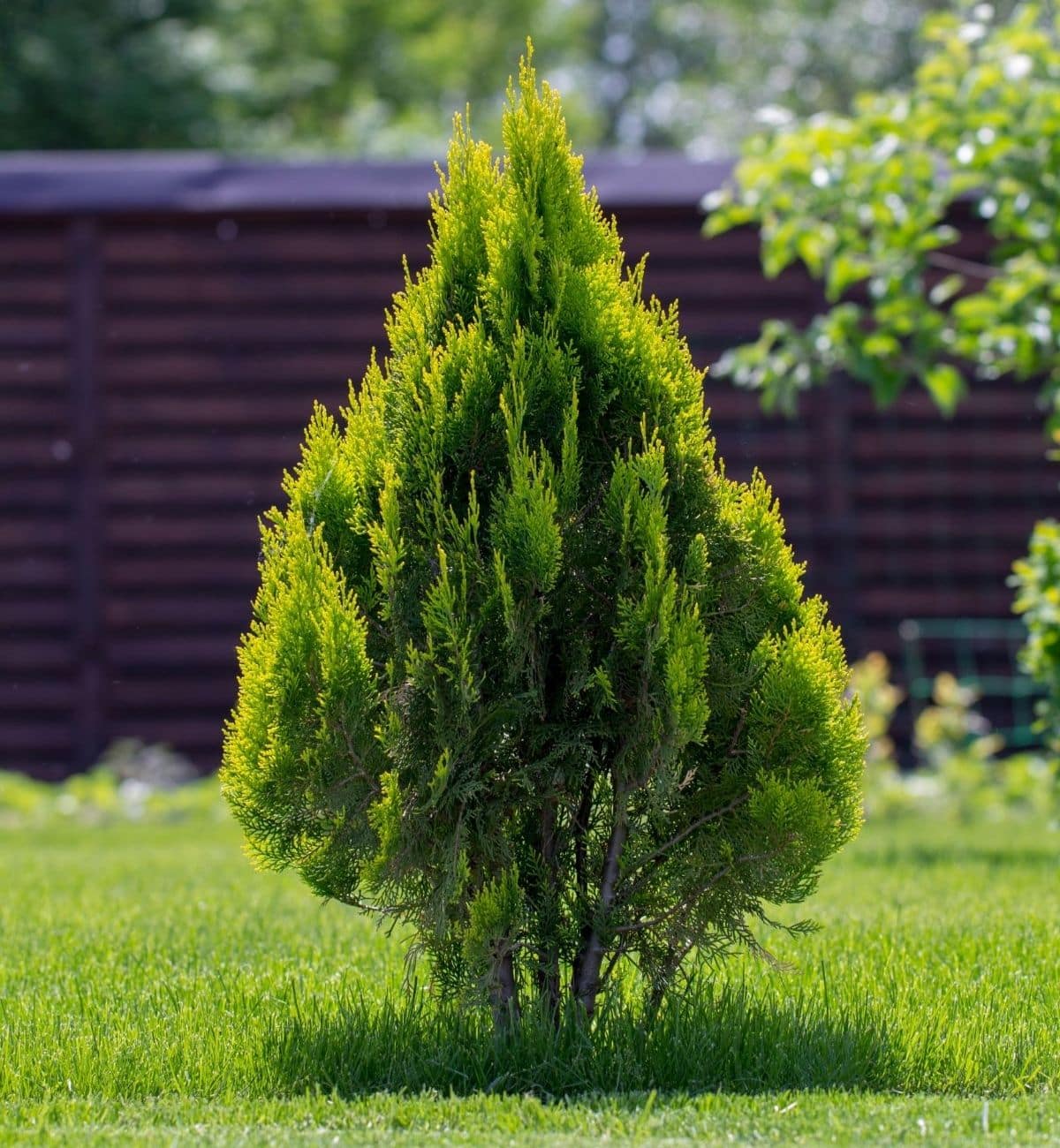
| Plant Type | Coniferous evergreen tree / shrub |
| Native Region | North-central and north-eastern USA |
| Sun/ Light | Full / partial sun |
| Hardiness Zone | 9b-11, USDA |
| Water | Moderate to heavy |
| Soil | Moist to well-drained loam or clay |
| Blooms | Winter |
| Foliage Color | Light green to shades of yellow/brown/green |
| Flower Color | Light brown, reddish-brown |
| Size | Height: 20 ft or more |
| When to Plant Seeds | Early spring or autumn before the frost |
Interesting fact: American Arborvitae has a history of use in construction and in natural medicine such as a topical applicant to treat skin conditions.
4.) Azalea (Rhododendron spp.)
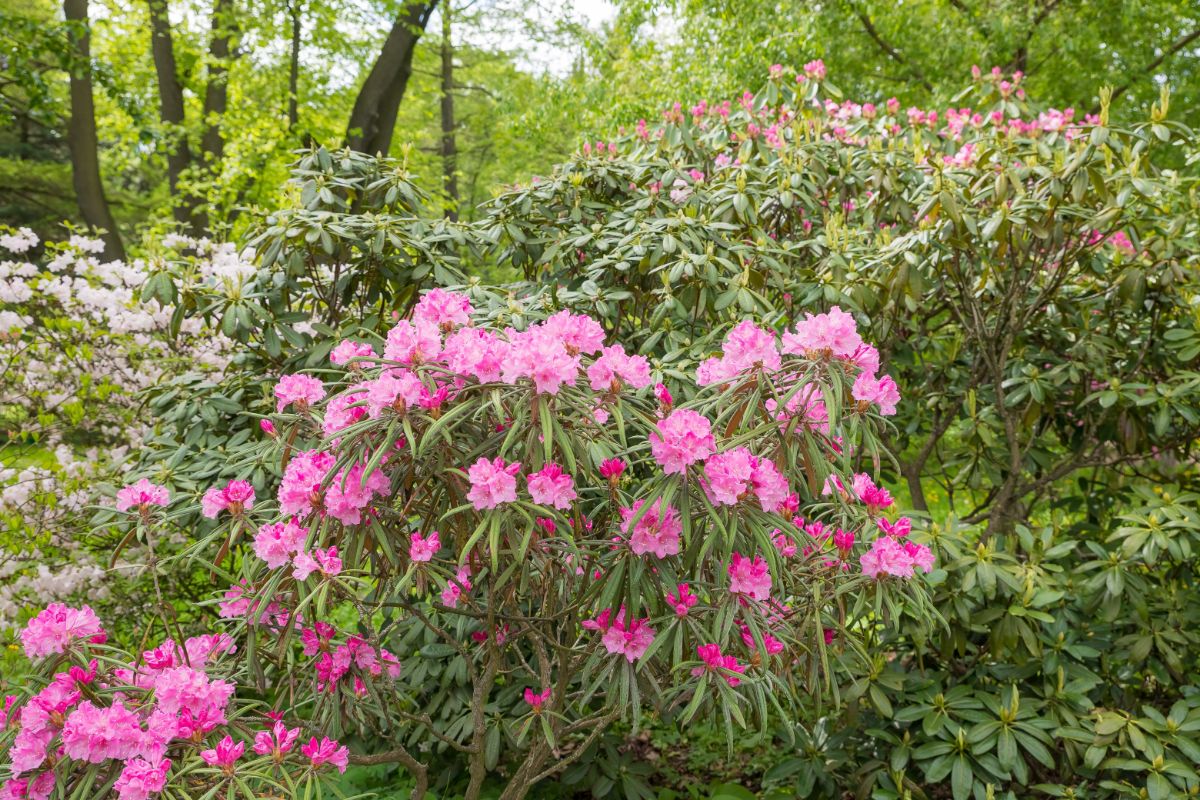
| Plant Type | Flowering shrub (deciduous or evergreen, depending on the species) |
| Sun/ Light | Partial sun / partial shade |
| Hardiness Zone | 5-9, USDA |
| Water | Moderate |
| Soil | Cool, moist, low pH |
| Bloom | Early summer/ spring |
| Foliage Color | Glossy dark green |
| Flower Color | Peach, pink, coral, purple, white |
| Size | Height: 4-8 ft |
| When to Plant Seeds | Spring to early autumn |
Interesting fact: Azalea leaves and nectar are highly toxic and giving someone azalea flowers in a black vase has been known to be equated with a death threat.
5.) Forsythia (Forsythia x intermedia)
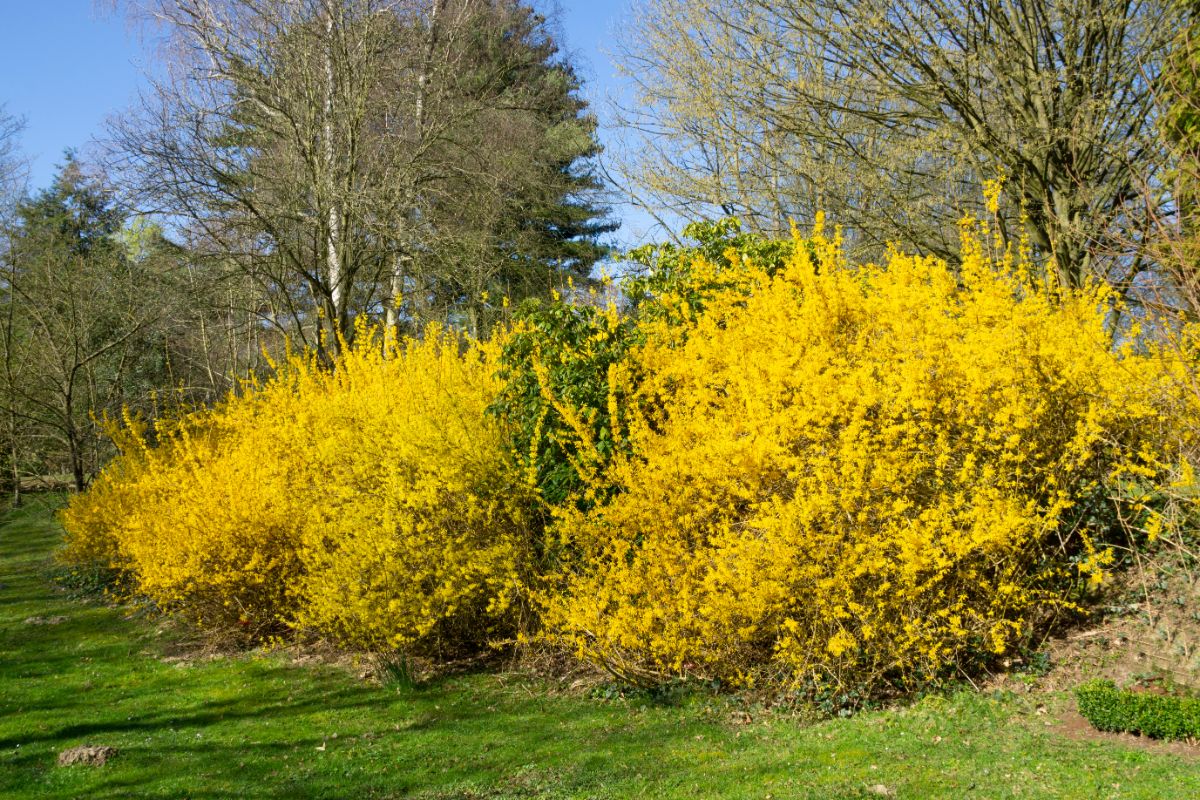
| Plant Type | Flowering deciduous shrub |
| Native Region | Eastern Europe and Eastern Asia |
| Sun/ Light | Full sun |
| Hardiness Zone | 5-8, USDA |
| Water | Moderate but drought tolerant once established |
| Soil | Loose and well-drained |
| Bloom | Late January to early March |
| Foliage Color | Dark green to yellow, purple, and maroon |
| Flower Color | Golden-yellow |
| Size | Height: 8-10 ft. |
| When to Plant Seeds | Late autumn or early spring |
Interesting fact: This flowering shrub is named in memory of Royal Horticultural Society founder, William Forsyth.
Flowers
6.) Shasta Daisy (Leucanthemum x superbum)
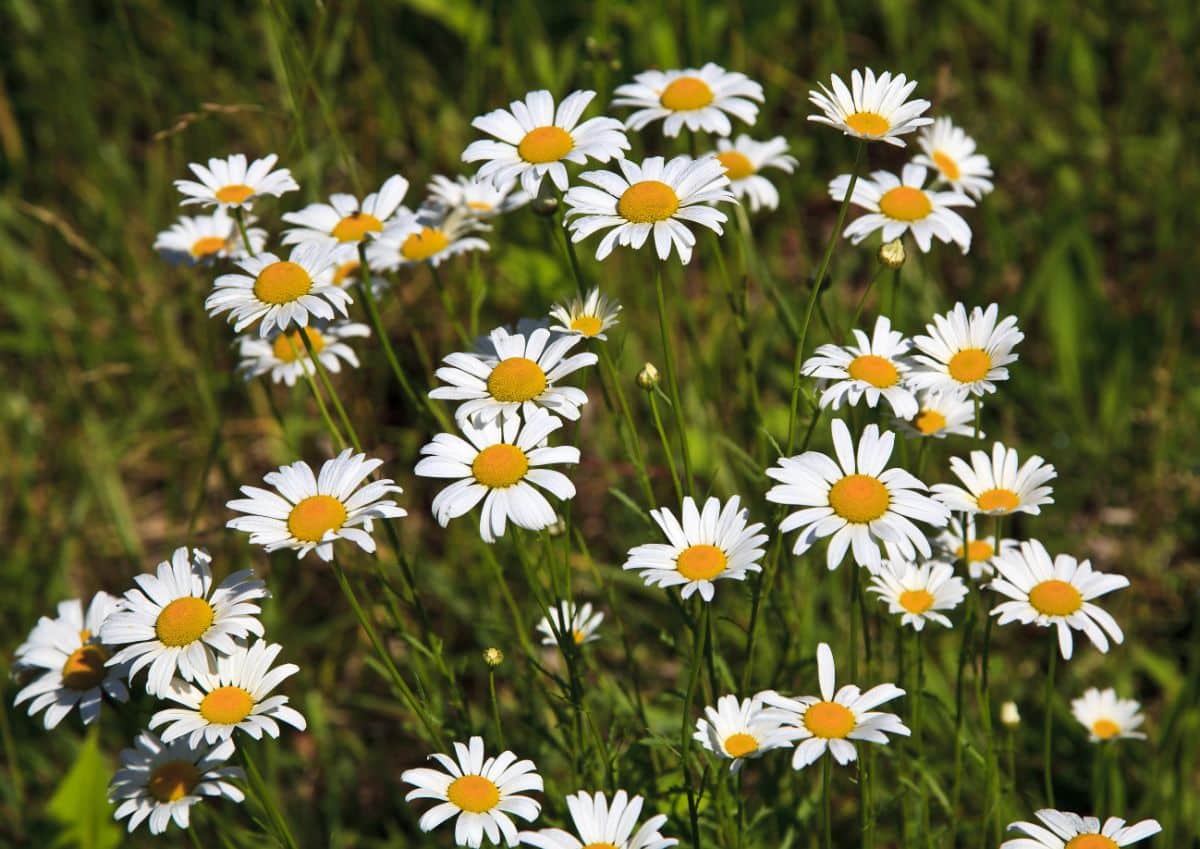
| Plant Type | Herbaceous perennial flowering plant |
| Native Region | Europe / United States |
| Sun/ Light | Full sun / light shade |
| Hardiness Zone | 4-10, USDA |
| Water | Light water |
| Soil | Well-drained to light moisture |
| Bloom | Spring-autumn |
| Foliage Color | Green |
| Flower Color | White, yellow |
| Size | Height: 6 in. to 4 ft. |
| When to Plant Seeds | Spring or early summer |
Interesting fact: The Shasta Daisy was created in 1901 by an experimental botanist in California by the name of Luther Burbank. He created the Shasta Daisy by breeding 4 varieties of daisies together in an attempt to create a daisy with ultra-white petals.
7.) Lily (Lilium spp.)
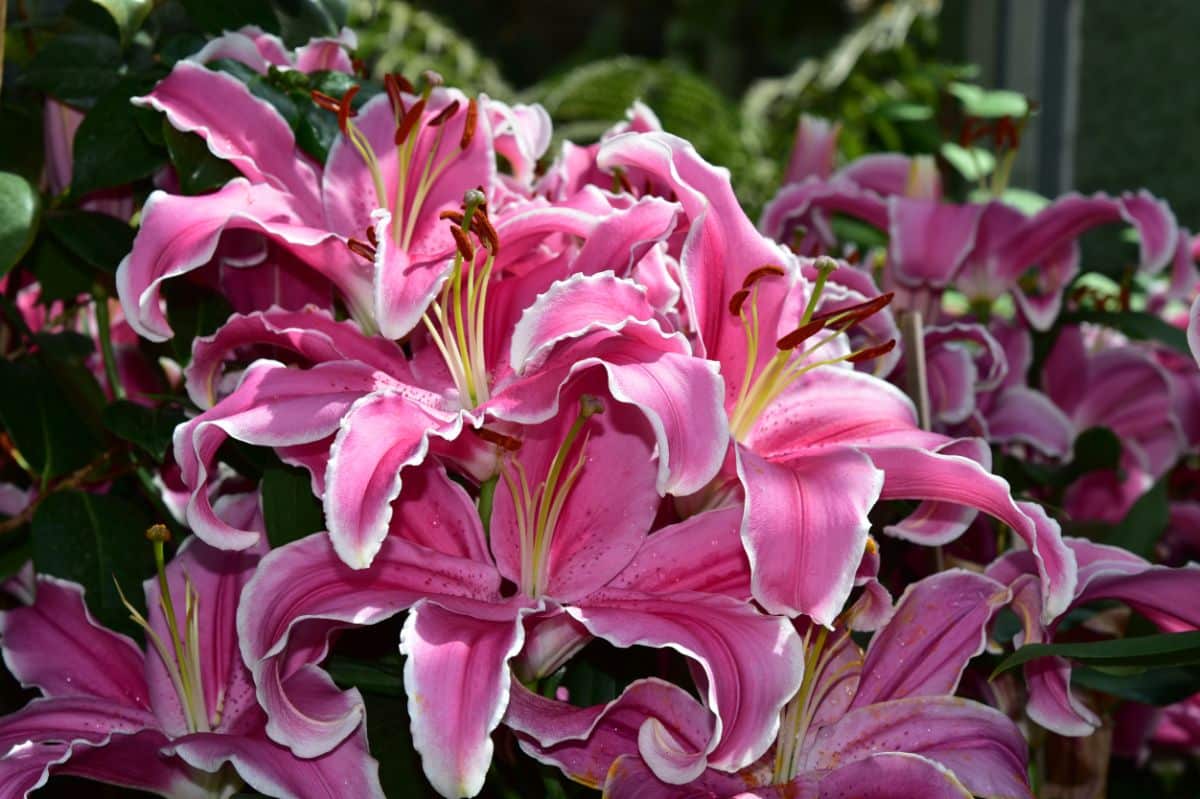
| Plant Type | Flowering perennial shrub |
| Native Region | Northern hemisphere |
| Sun/ Light | Full sun / partial sun |
| Hardiness Zone | 4-9, USDA |
| Water | Moderate to light levels |
| Soil | Well-drained |
| Bloom | Spring, summer, and autumn |
| Foliage Color | Green |
| Flower Color | Orange, pink, red, white, yellow |
| Size | Height: 3-4 ft. |
| When to Plant Seeds | End of spring or beginning of summer |
Interesting fact: While toxic to cats, lilies have a long history of being used as a natural remedy to treat various medical conditions including stomach disorders, fever, and inflammation. The earliest known record of medicinal use of lilies dates to before the second century A.D.
8.) Tulip (Genus Tulipa)
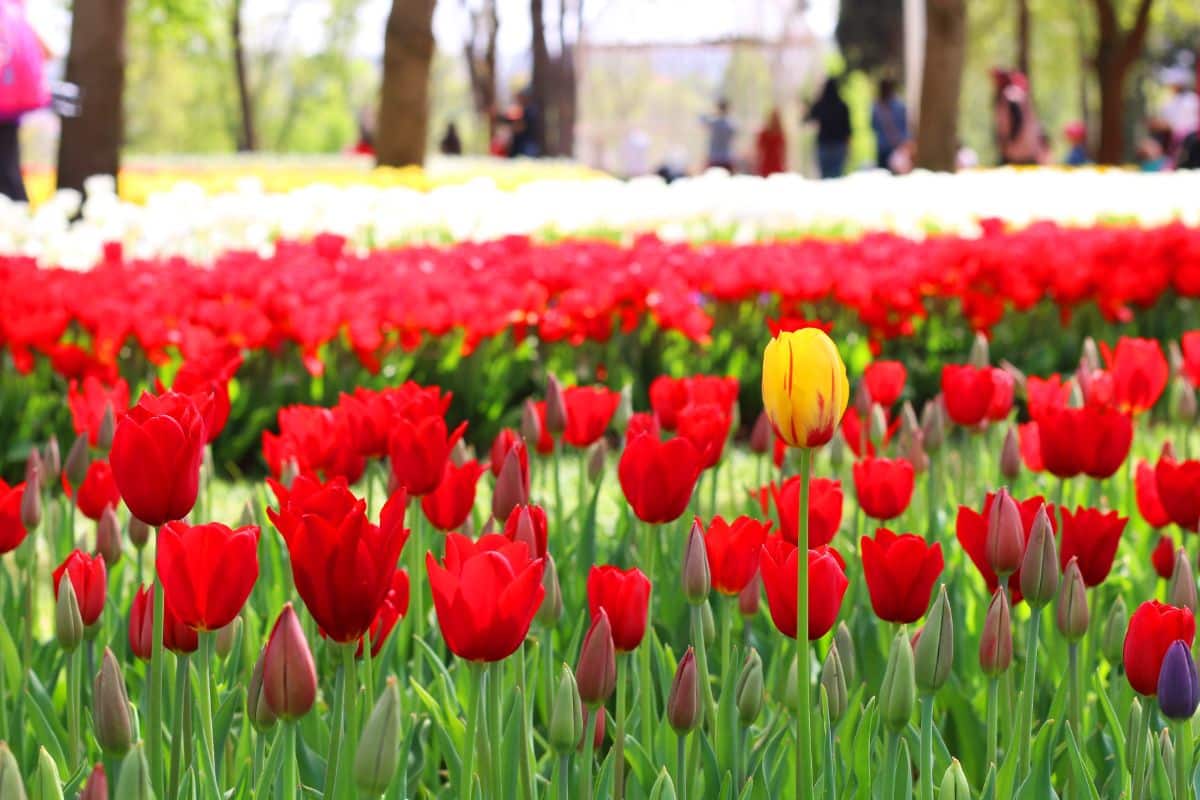
| Plant Type | Flower |
| Native Region | Central Asia and Turkey |
| Sun/ Light | Full to medium sun / average shade |
| Hardiness Zone | 4-10, USDA |
| Water | Moderate |
| Soil | Well-drained loam |
| Blooms | Spring |
| Foliage Color | Blue-green |
| Flower Color | Wide range of colors except for true blue |
| Size | Height: 8-30 in. |
| When to Plant Seeds | February |
Interesting fact: Tulips can be used for culinary purposes and may even be used as an onion substitute. You can even make wine from tulips!
9.) Beach Rose (Rosa rugosa)
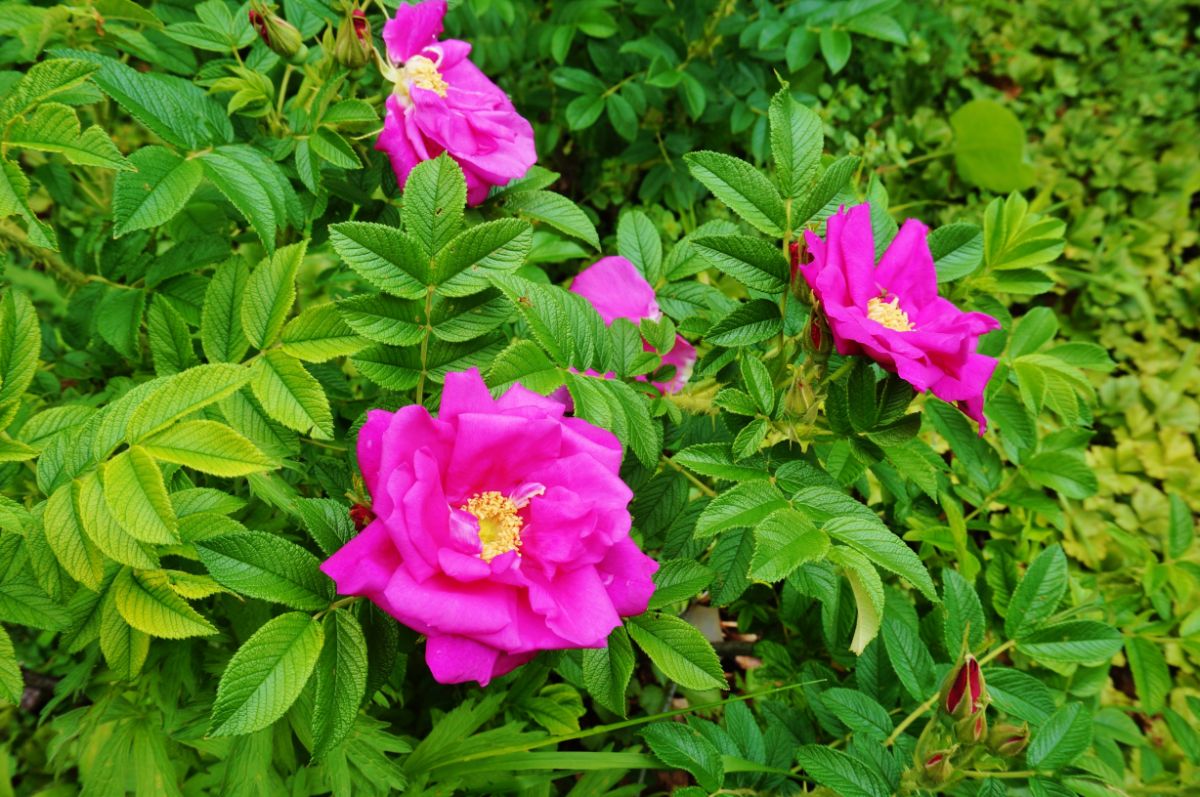
| Plant Type | Perennial flowering plant |
| Native Region | China, Korea, Japan |
| Sun/ Light | Full sun |
| Hardiness Zone | 2-8, USDA |
| Water | Moderate to light |
| Soil | Well-drained but moist |
| Bloom | Late spring to early summer |
| Foliage Color | Dark green |
| Flower Color | Pink, Scarlette |
| Size | Height: 4-6 ft. |
| When to Plant Seeds | Autumn before the first frost |
Interesting fact: Beach Rose produces reddish-orange colored fruit known as “hips” that can be used to make tea and jam.
10.) Lilac (Syringa vulgaris)
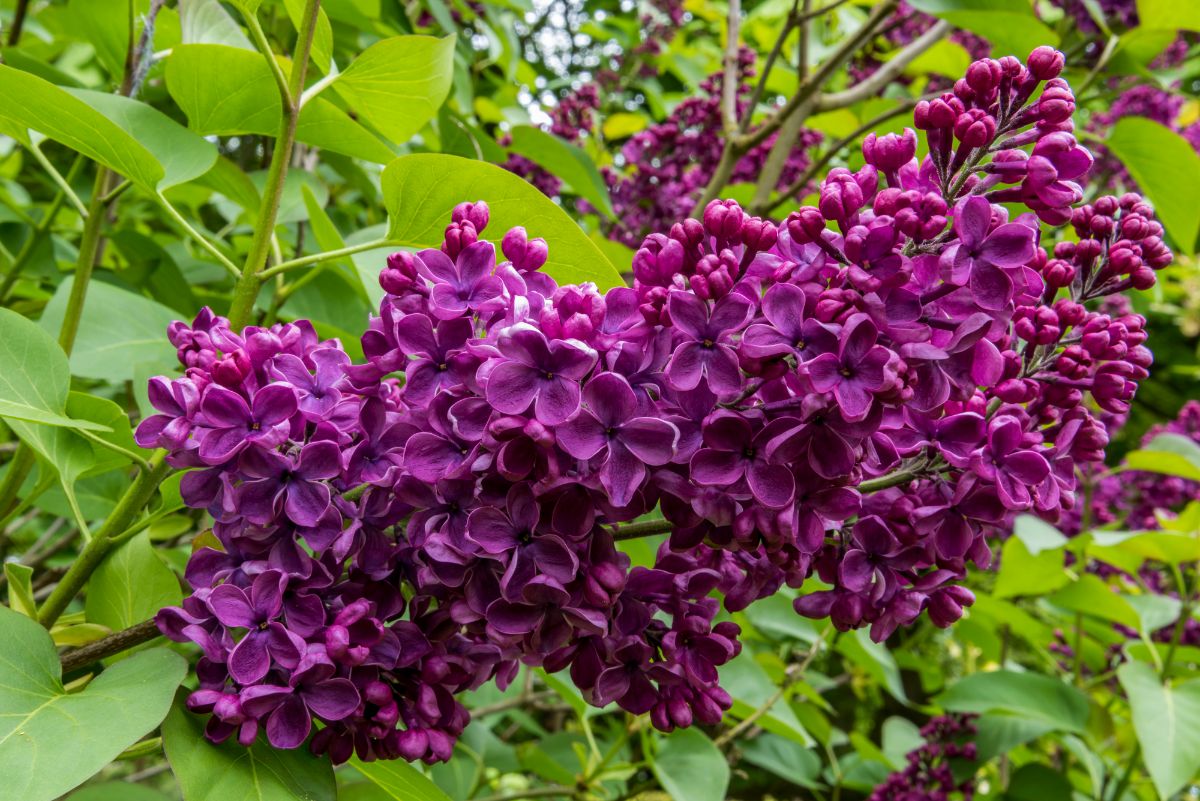
| Plant Type | Deciduous flowering plant |
| Sun/ Light | Full sun |
| Hardiness Zone | 4-8, USDA |
| Water | Moderate to light |
| Soil | Well-drained |
| Bloom | Mid to late spring |
| Foliage Color | Green |
| Flower Color | Blue, pink, purple, red, white, yellow |
| Size | Height: 8-12 ft. |
| When to plant Seeds | Spring |
Interesting fact: Former U.S. President Thomas Jefferson was so fond of lilacs that he wrote about them extensively in his gardening book.
11.) Leadwort (Ceratostigma plumbaginoides)
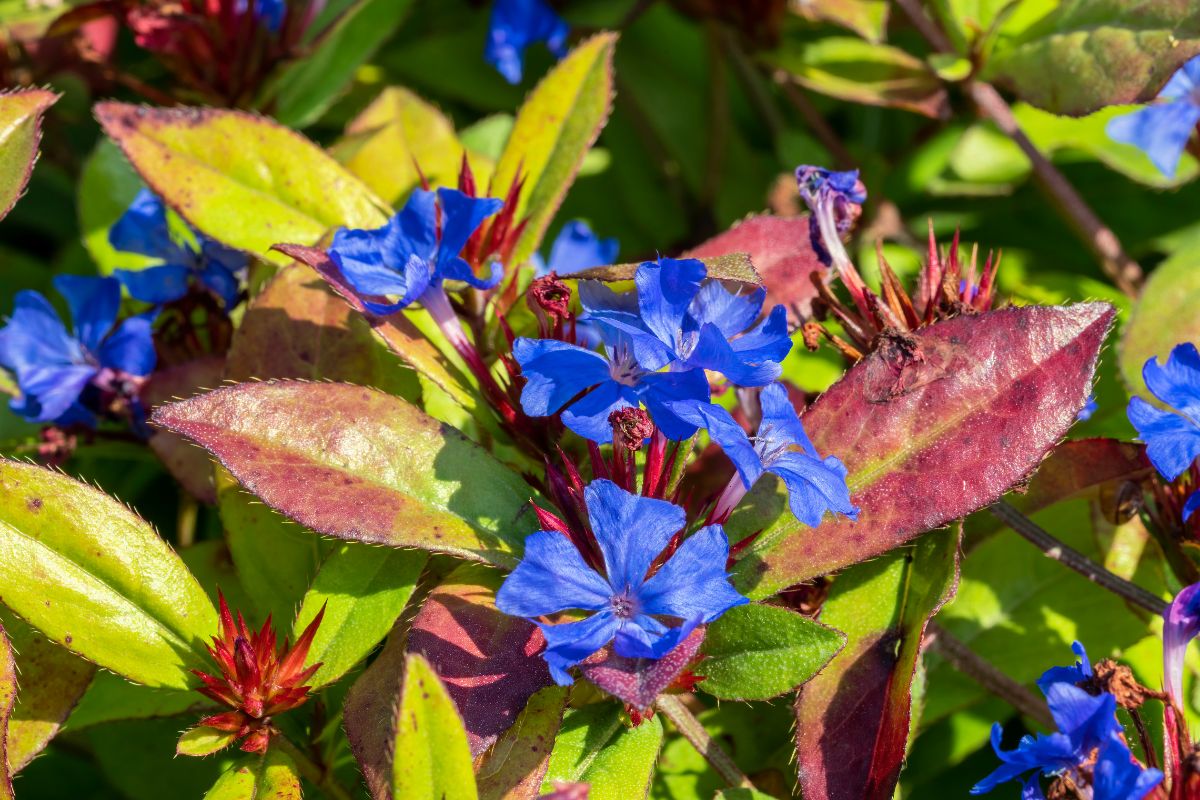
| Plant Type | Deciduous perennial flowering shrub |
| Native Region | Western China |
| Sun/ Light | Full sun / partial shade |
| Hardiness Zone | 5-9, USDA |
| Water | Medium |
| Soil | Well-drained |
| Bloom | July to September |
| Foliage Color | Green during summer, bronzy-red in autumn |
| Flower Color | Deep blue to burgundy red |
| Size | Height: 0.75-1 ft |
| When to Plant Seeds | Mid-spring |
Interesting fact: Leadwort makes a great beginner plant because it’s known to be resilient in poor soil and other less than ideal planting environments.
12.) Lavender (Lavandula spp.)
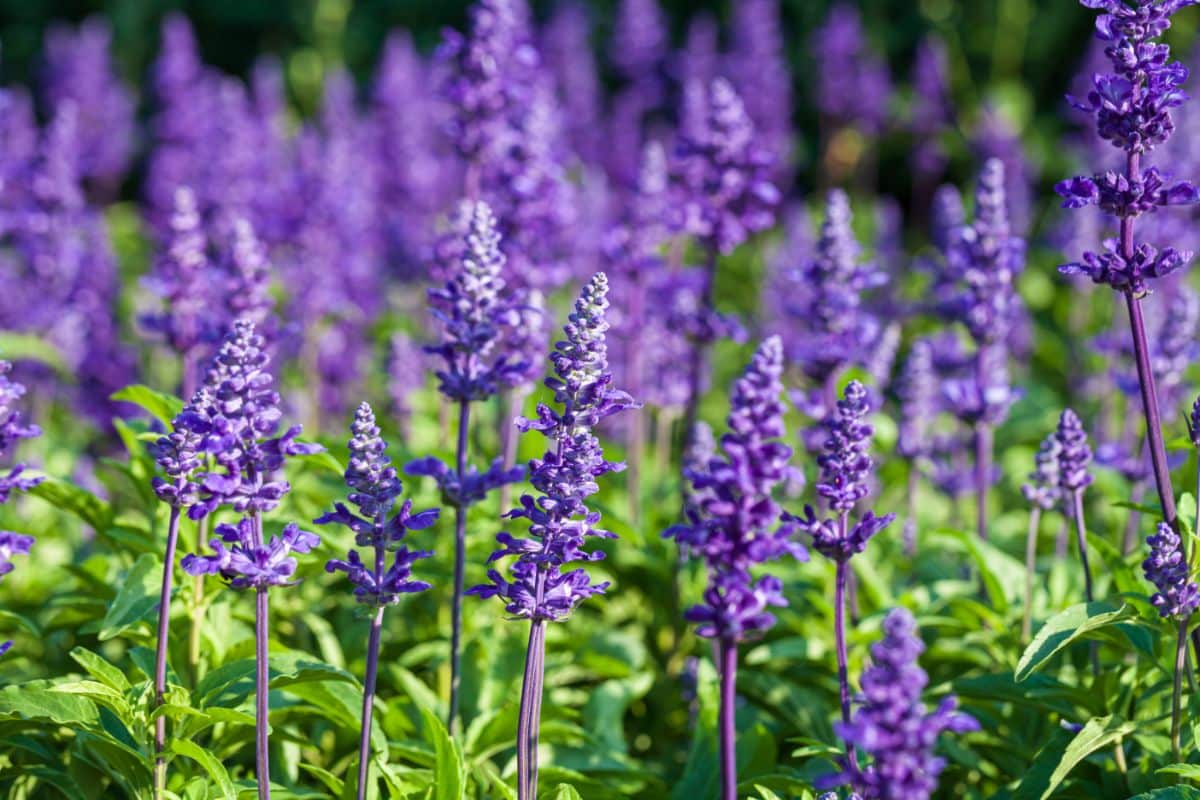
| Plant Type | Herbaceous perennial flowering plant |
| Native Region | Europe |
| Sun/ Light | Full sun |
| Hardiness Zone | 5a-9a, USDA |
| Water | Moderate, drought-tolerate when established |
| Soil | Dry, well-draining |
| Bloom | Summer |
| Foliage Color | Green |
| Flower Color | Purple |
| Size | Height: 2–3 ft. |
| When to Plant Seeds | Late March/April |
Interesting fact: Lavender is known for being used by ancient Egyptians during the mummification process and by ancient Greeks as a sleep aid.
13.) Sunflowers (Helianthus spp.)
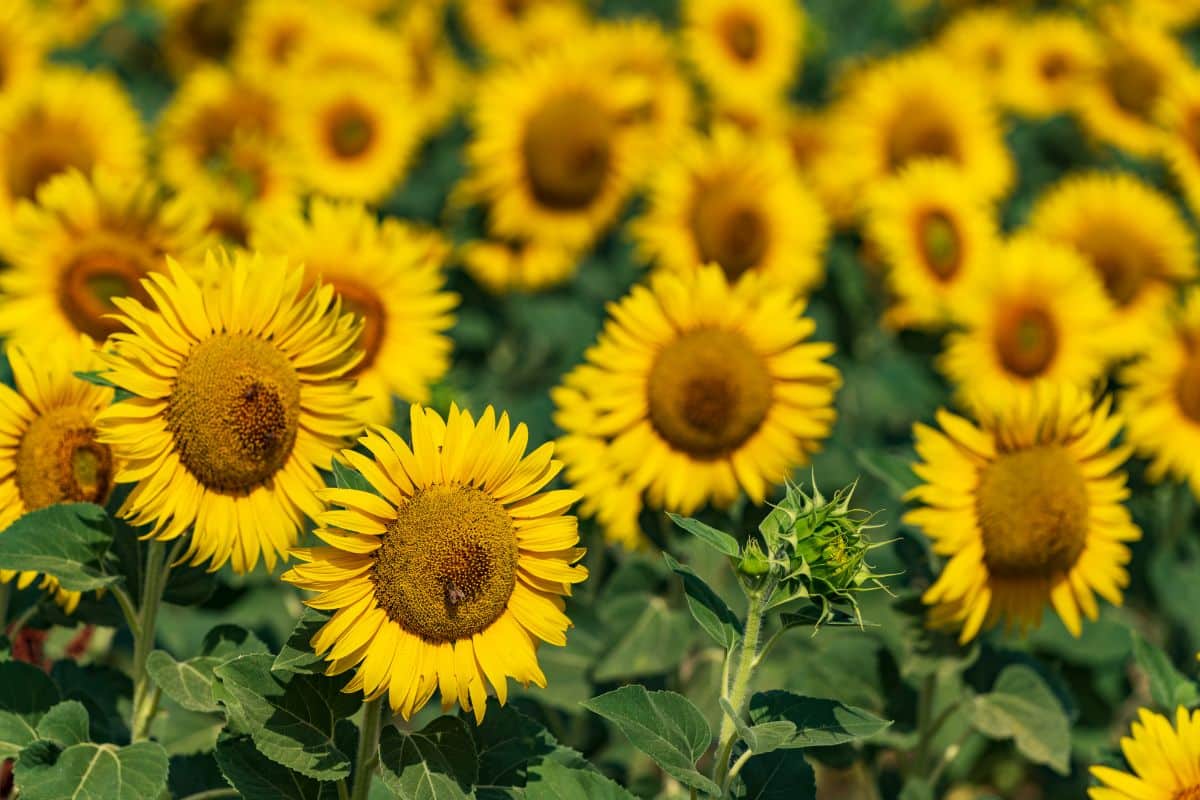
| Plant Type | Herbaceous Annual or perennial flower |
| Native Region | North and South America |
| Sun/ Light | Full sun |
| Hardiness Zone | 4-9, USDA |
| Water | Moderate |
| Soil | Loose, well-drained, somewhat alkaline soil |
| Bloom | Summer and autumn |
| Foliage Color | Green |
| Flower Color | Yellow |
| Size | Height: 9-16 ft. |
| When to Plant Seeds | After the last frost has ended |
Interesting fact: The world record for tallest sunflower ever grown is 30 feet, 1 inch, and was set in 2014 by Hans-Peter Schiffer.
14.) Zinnia (Zinnia elegans)
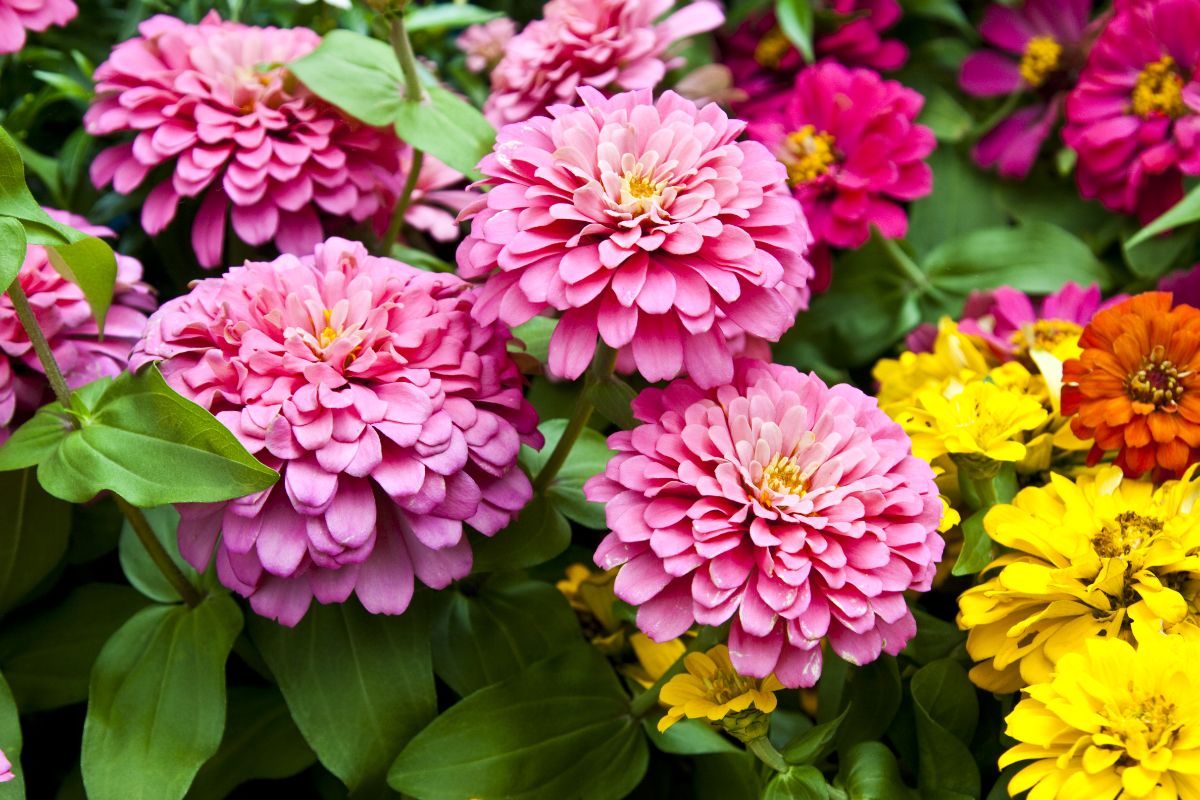
| Plant Type | Herbaceous annual flowering plant |
| Native Region | North and South America |
| Sun/ Light | Full sun |
| Hardiness Zone | 2-8, USDA |
| Water | Medium |
| Soil | Well-drained, but moist |
| Bloom | Late spring to the first frost |
| Foliage Color | Green |
| Flower Color | Lime green, yellow peach, salmon, orange |
| Size | Height: 6 in. to 4 ft. |
| When to Plant Seeds | Spring |
Interesting fact: Although adored by people from all over the globe today, the Spanish were not too fond of them. It is said that they dubbed the flowers “sickness of the eye” when they first encountered them in Mexico.
15.) Marigolds (Tagetes erecta)

| Plant Type | Flowering shrub |
| Sun/ Light | Full sun |
| Hardiness Zone | 2-11, USDA |
| Water | Moderate |
| Soil | Moderately fertile, well-drained with sand or loam mix |
| Bloom | Spring, summer, and autumn |
| Foliage Color | Green |
| Flower Color | Shades of yellow, gold, red |
| Size | Height: 6 in. to 3 ft. |
| When to Plant Seeds | After the last frost has ended |
Interesting fact: Marigolds are known to contain anti-viral, anti-bacterial, anti-fungal, and anti-inflammatory properties.
16.) Cosmos (Cosmos bipinnatus)
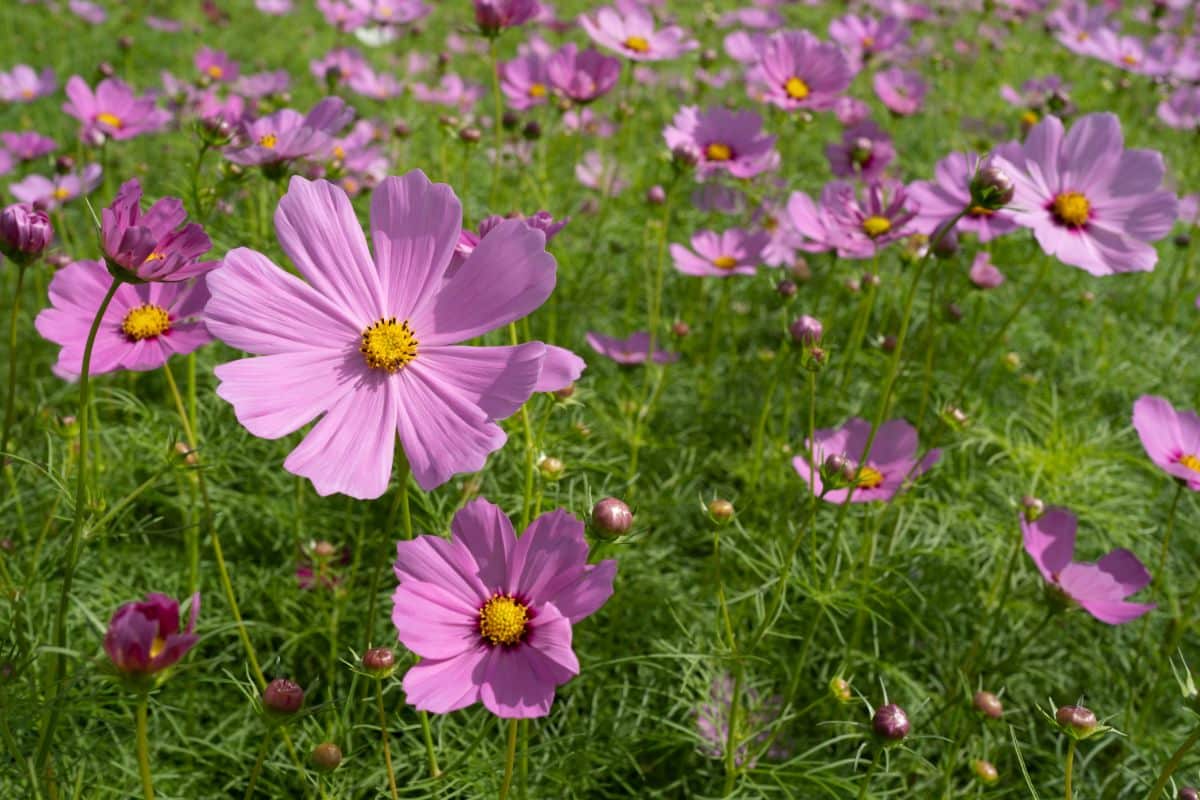
| Plant Type | Herbaceous perennials |
| Native Region | Mexico, Northern South America, Central America |
| Sun/ Light | Full sun |
| Hardiness Zone | 2-11, USDA |
| Water | Moderate |
| Soil | Well-drained, sandy texture |
| Bloom | Spring, summer, autumn |
| Foliage Color | Green |
| Flower Color | Orange, pink, white |
| Size | Height: 18-60 in. |
| When to Plant Seeds | After the danger of frost has passed |
Interesting fact: Cosmo flowers are known to be a natural mosquito repellent.
17.) Morning Glory (Ipomoea purpurea)
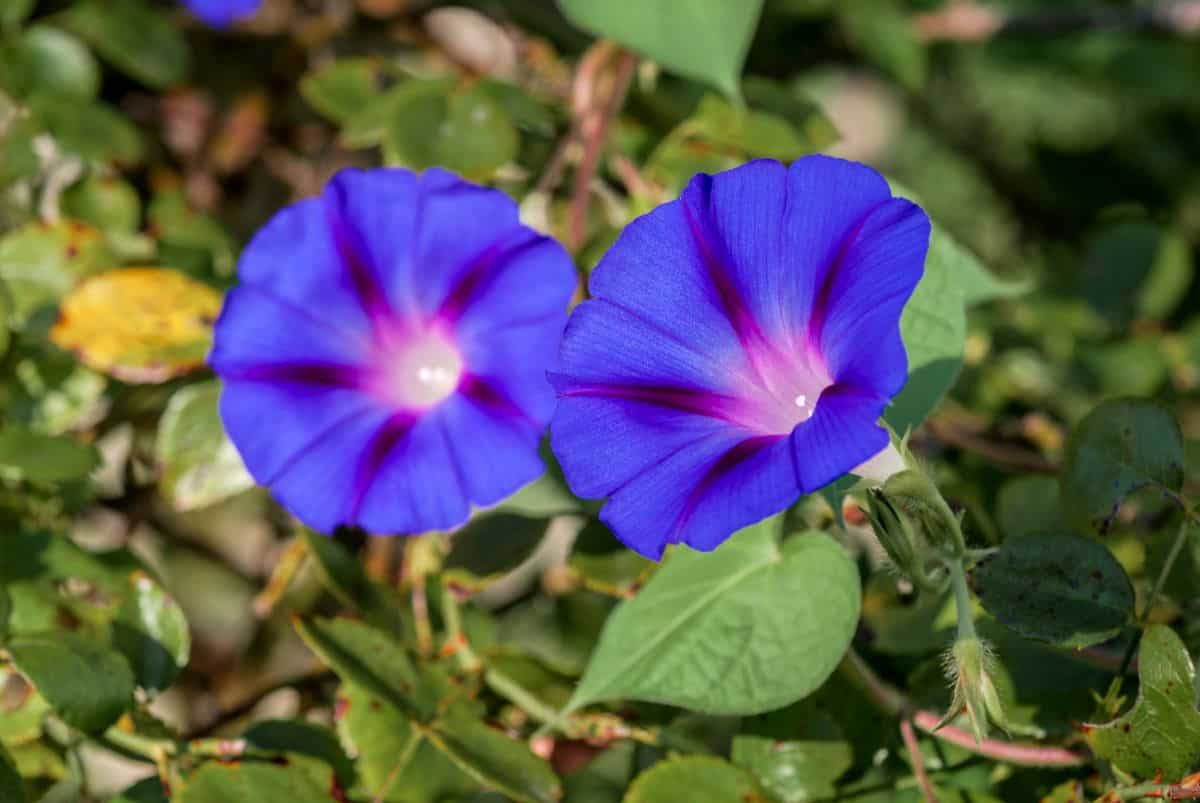
| Plant Type | Herbaceous annual/perennial flowing plant |
| Native Region | Central and South America |
| Sun/ Light | Full sun |
| Hardiness Zone | 1-11, USDA |
| Water | Moderate. Cut back in winter |
| Soil | Moderately fertile, well-drained |
| Bloom | June to October |
| Foliage Color | Green |
| Flower Color | Purple, blue, red, white, pink, and multi-colored. |
| Size | Height: 6-12 ft. |
| When to Plant Seeds | 1-2 weeks after last frost |
Interesting fact: Morning glories won’t repel deer as they’re known to snack on the leaves and vines.
18.) Sweet Pea (Lathyrus odoratus)
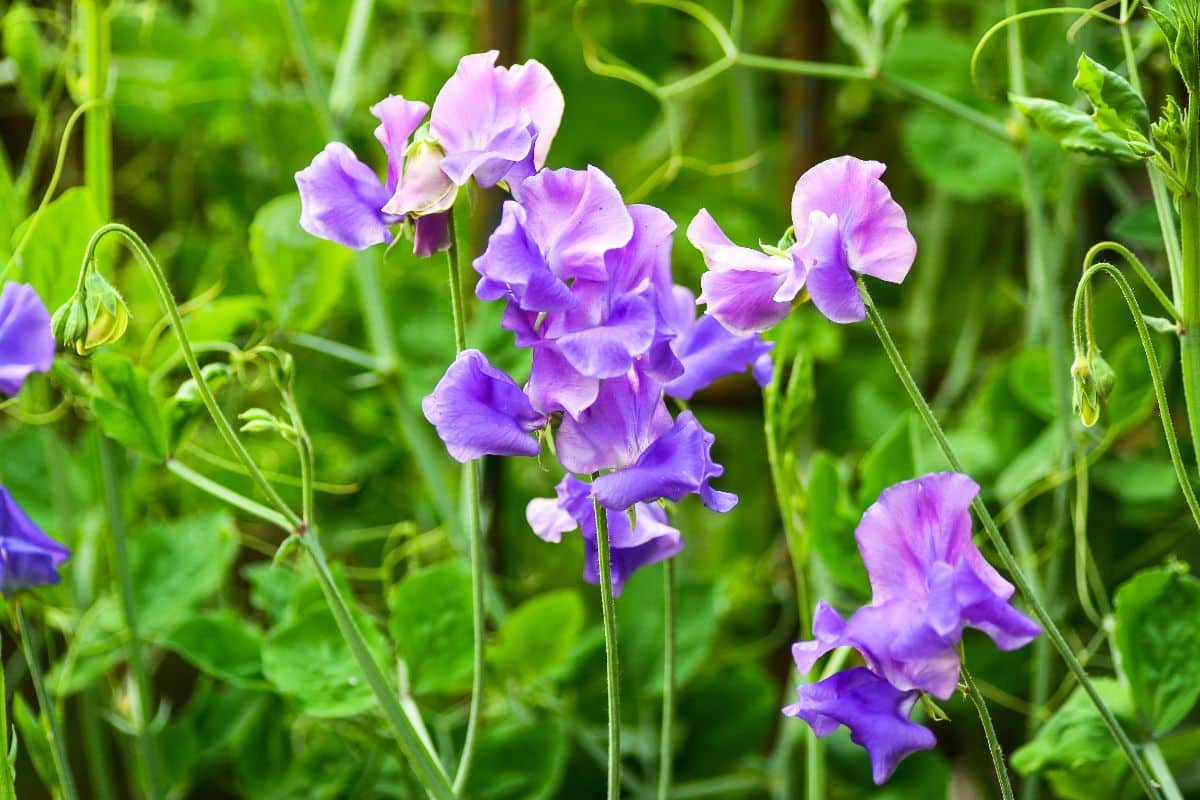
| Plant Type | Annual flowering climbing plant |
| Native Region | Sicily, southern Italy and the Aegean Islands |
| Sun/ Light | Full sun |
| Hardiness Zone | 2-11, USDA |
| Water | Moderate |
| Soil | Well-drained but moist, loamy |
| Bloom | Spring to early summer in warmer climates. autumn in cooler climates. |
| Foliage Color | Green |
| Flower Color | Blue, pink, purple, red, white |
| Size | Height: 3-8 ft. |
| When to Plant Seeds | Early spring |
Interesting fact: Sweet peas are popular for their strong, delicious fragrance and are a member of the legume family.
19.) Nasturtium (Tropaeolum majus)
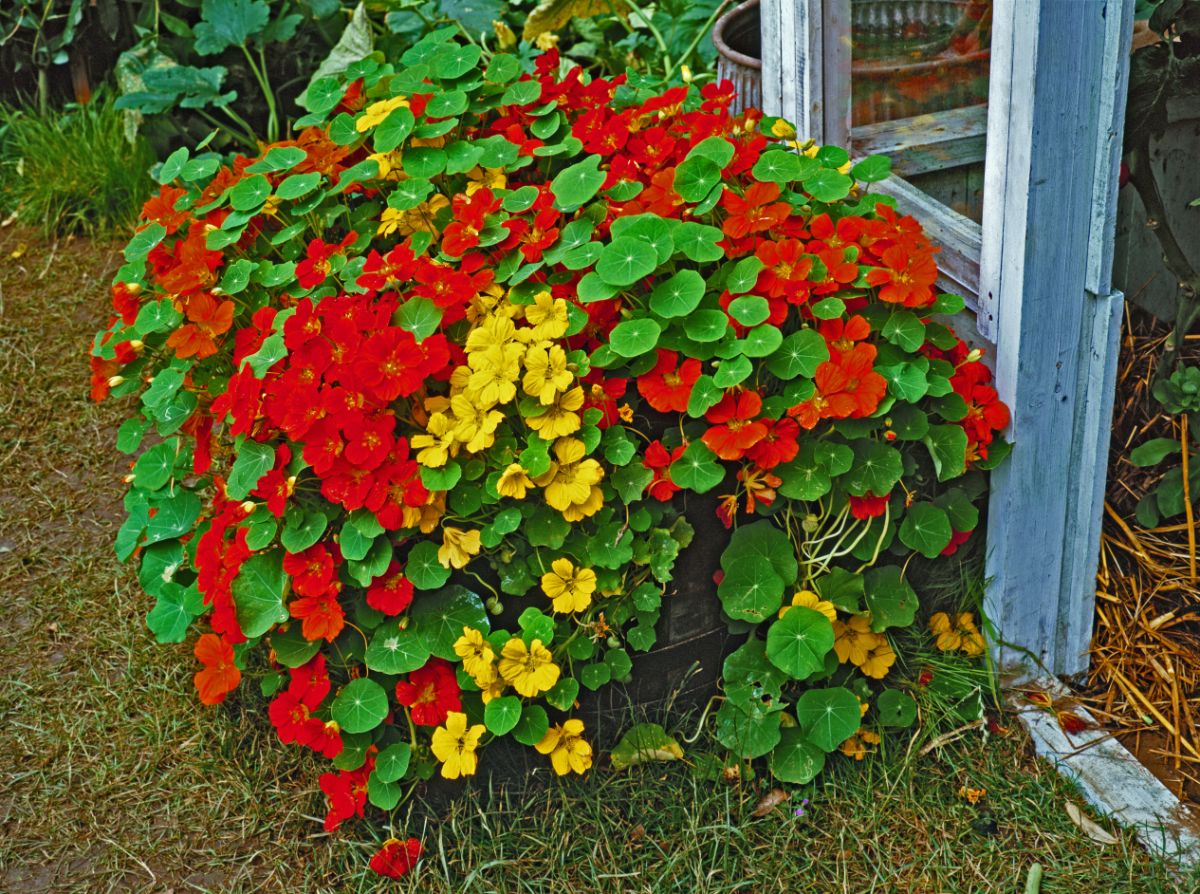
| Plant Type | Herbaceous Annual/perennial flowering plants |
| Native Region | South America and Central America |
| Sun/ Light | Full sun |
| Hardiness Zone | 9-11, USDA |
| Water | Moderate. |
| Soil | Well-drained |
| Bloom | May to September |
| Foliage Color | Green |
| Flower Color | Orange, red, yellow, cream |
| Size | Height: 6 in. to 10 ft. |
| When to Plant Seeds | Last frost to early summer |
Interesting Fact: Nasturtium flowers, leaves, stems, and young seed pods are edible and used in various dishes.
20.) Snapdragons (Antirrhinum majus)
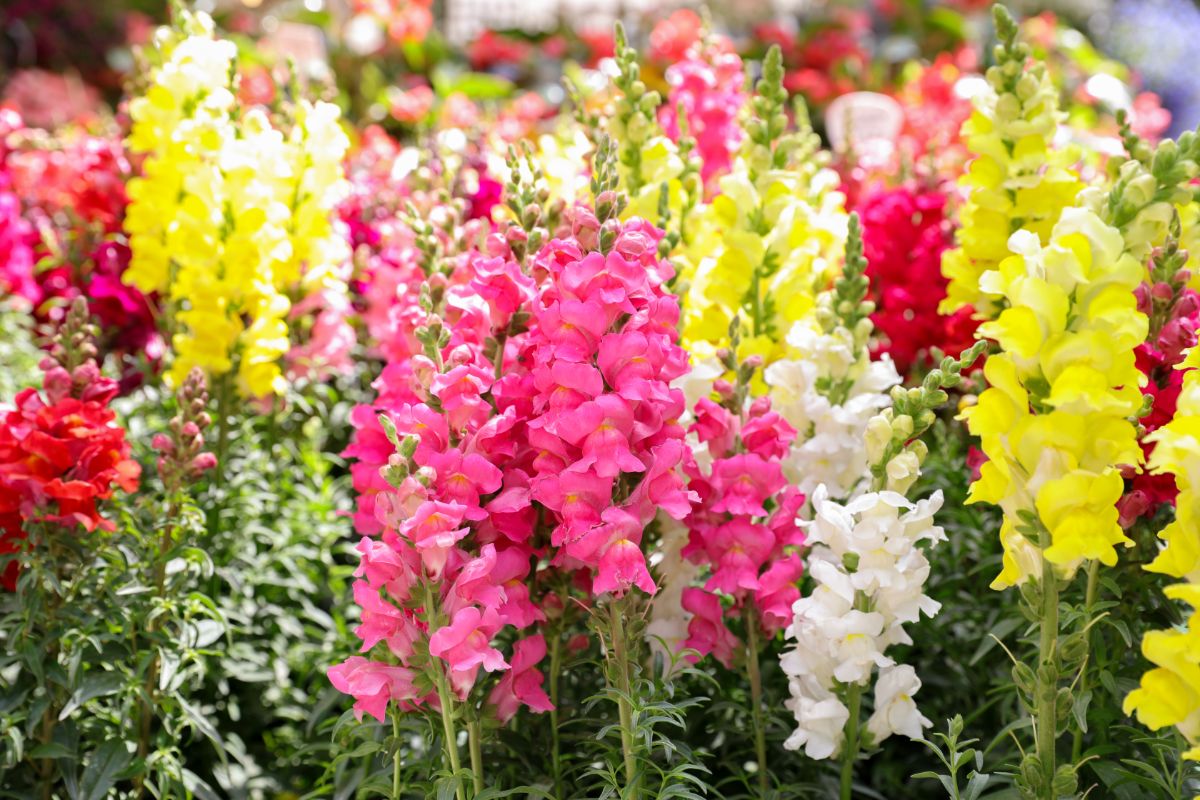
| Plant Type | Annual / Perrenial flowering plant (annual in certain climates) |
| Native Region | Mediterranean, Southern Europe |
| Sun/ Light | Full sun |
| Hardiness Zone | 7-11, USDA |
| Water | Moderate. |
| Soil | Well-drained, Water at base regularly |
| Bloom | Spring through autumn |
| Foliage Color | Green |
| Flower Color | White, yellow, pink, red, orange, peach, purple, violet |
| Size | Height: 6-15 in. |
| When to Plant Seeds | Last frost |
Interesting fact: The vibrant snapdragon flowers are known to attract butterflies.
21.) Fuchsia (Fuchsia magellanica)
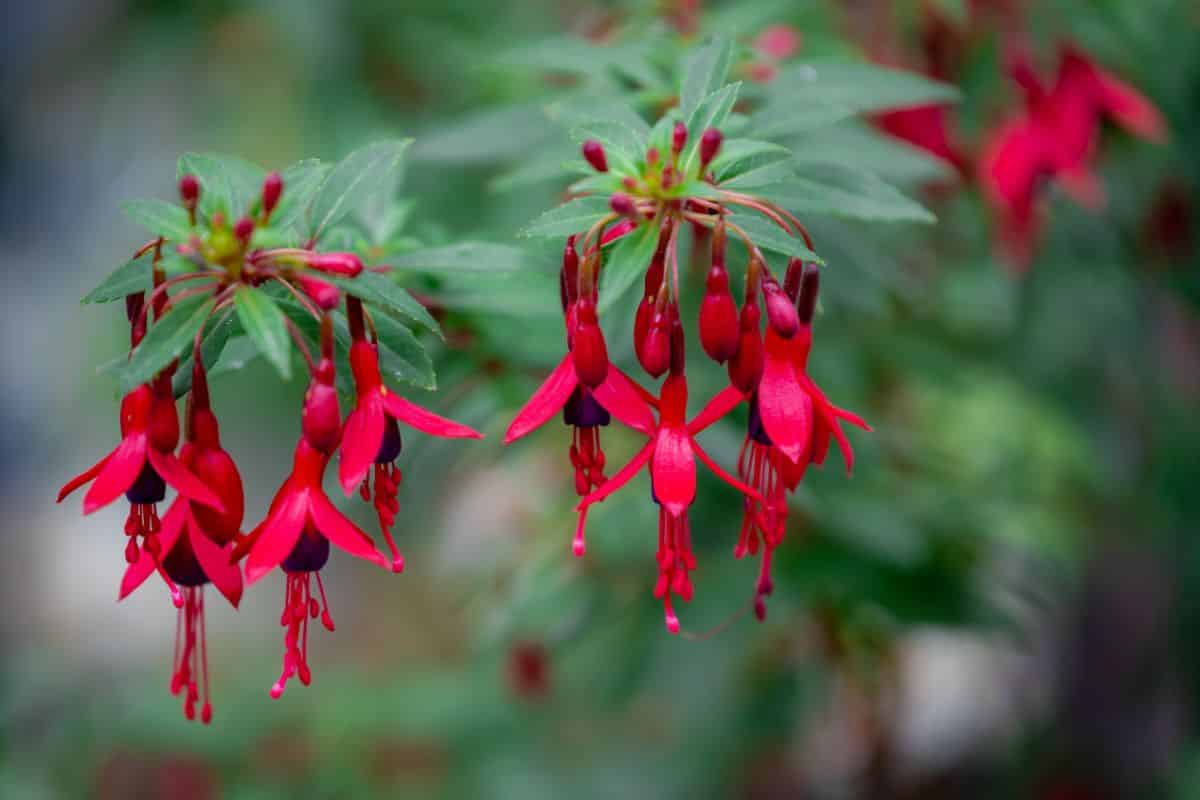
| Plant Type | Perennial flowering plant |
| Native Region | New Zealand, Tahiti, Central America, South America |
| Sun/ Light | Full sun / partial shade |
| Hardiness Zone | 10-11, USDA |
| Water | Moderate |
| Soil | Well-drained |
| Bloom | Mid-April to May |
| Foliage Color | Green |
| Flower Color | Purple, pink, magenta, red, white |
| Size | Height: 1-8 ft. |
| When to Plant Seeds | Late spring (March/April) |
Interest fact: Fuchsias are famous for attracting hummingbirds.
22.) Geraniums (Pelargonium)
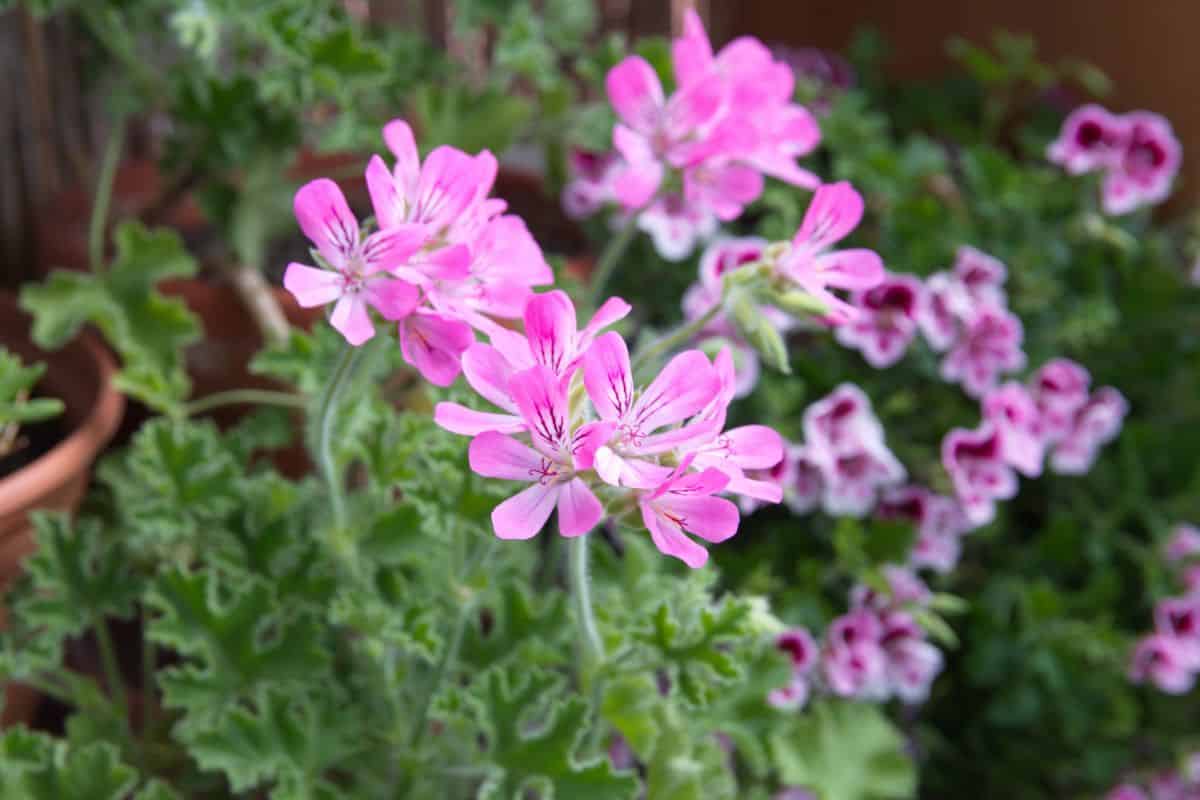
| Plant Type | Herbaceous perennial flowering plant |
| Native Region | Eastern North America |
| Sun/ Light | Full sun / afternoon shade in hotter climates |
| Hardiness Zone | 10-11 USDA |
| Water | Moderate |
| Soil | Well-drained |
| Bloom | Spring to autumn |
| Foliage Color | Green |
| Flower Color | White, pink, red, lavender, purple, magenta, and rose |
| Size | Height: 3-24 in. |
| When to Plant Seeds | 10 weeks before the last frost |
Interesting fact: Although geraniums are no doubt visually attractive, these flowers are toxic when eaten by dogs and cats.
23.) Dahlias (Dahlia pinnata)
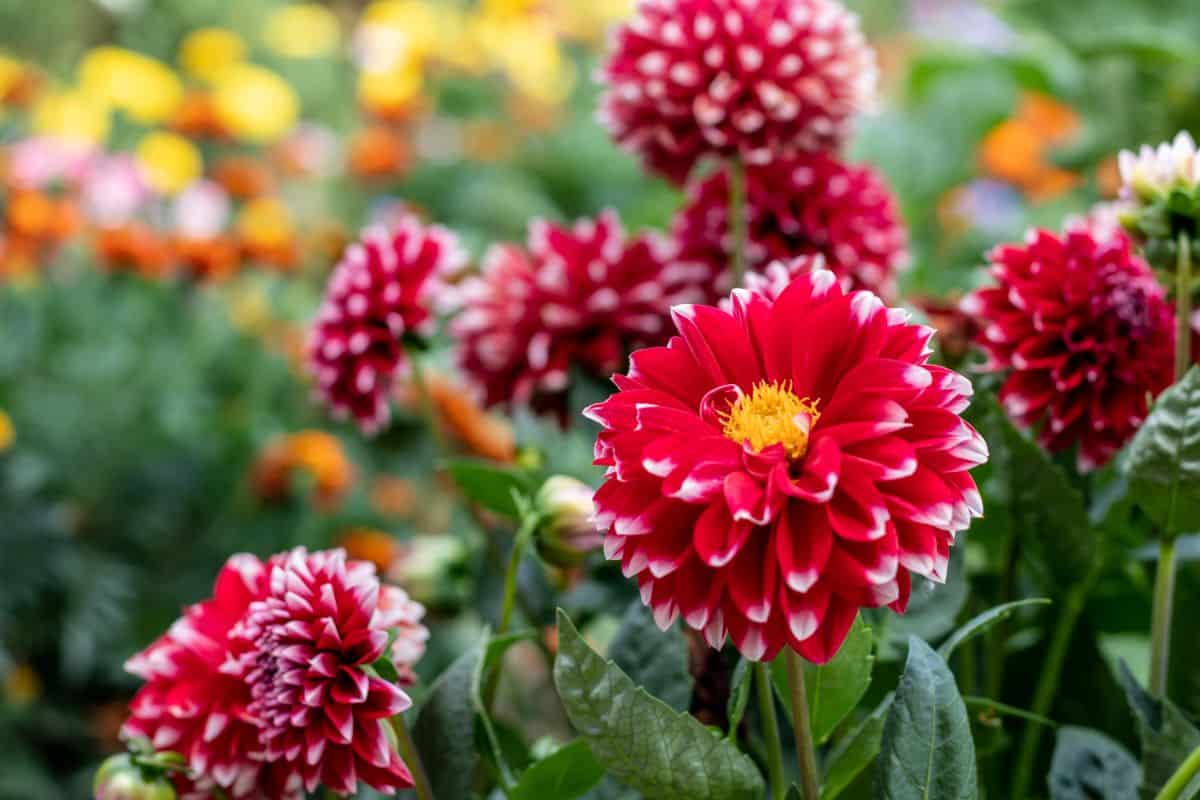
| Plant Type | Annual flowering plant |
| Native Region | Mexico and Guatemala |
| Sun/ Light | Full sun |
| Hardiness Zone | 4-11, USDA |
| Water | Moderate |
| Soil | Well-drained, sandy |
| Bloom | July to September |
| Foliage Color | Various shades of green |
| Flower Color | Pink, purple, red, orange, yellow, and white |
| Size | Height: 1-6 ft. |
| When to Plant Seeds | After last frost |
Interesting fact: Before the Spanish Conquest, roots from the Dahlia flower were grown as a food crop by the Aztecs.
24.) Ornamental Onions (Allium schubertii)
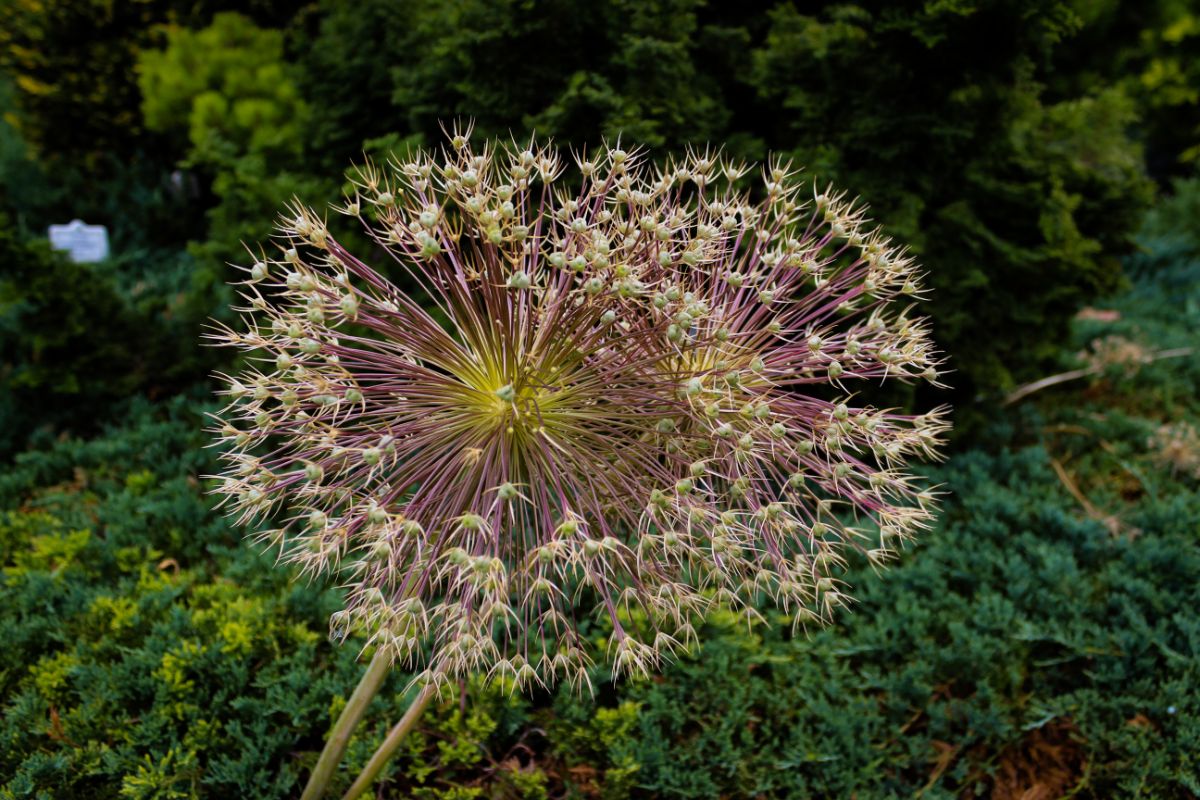
| Plant Type | Perennial flower |
| Native Region | Eastern Mediterranean, North Africa |
| Sun/ Light | Full sun |
| Hardiness Zone | 4-10, USDA |
| Water | Light |
| Soil | Dry to medium moisture, well-drained |
| Bloom | Spring to summer |
| Foliage Color | Green |
| Flower Color | Lavender, purple, pink, white |
| Size | Height: 12-36 in. |
| When to Plant Seeds | 6-8 weeks before last frost |
Interesting fact: This flower belongs to the same genus of plants as onions, chives, garlic, and leeks.
25.) Daffodils (Narcissus)
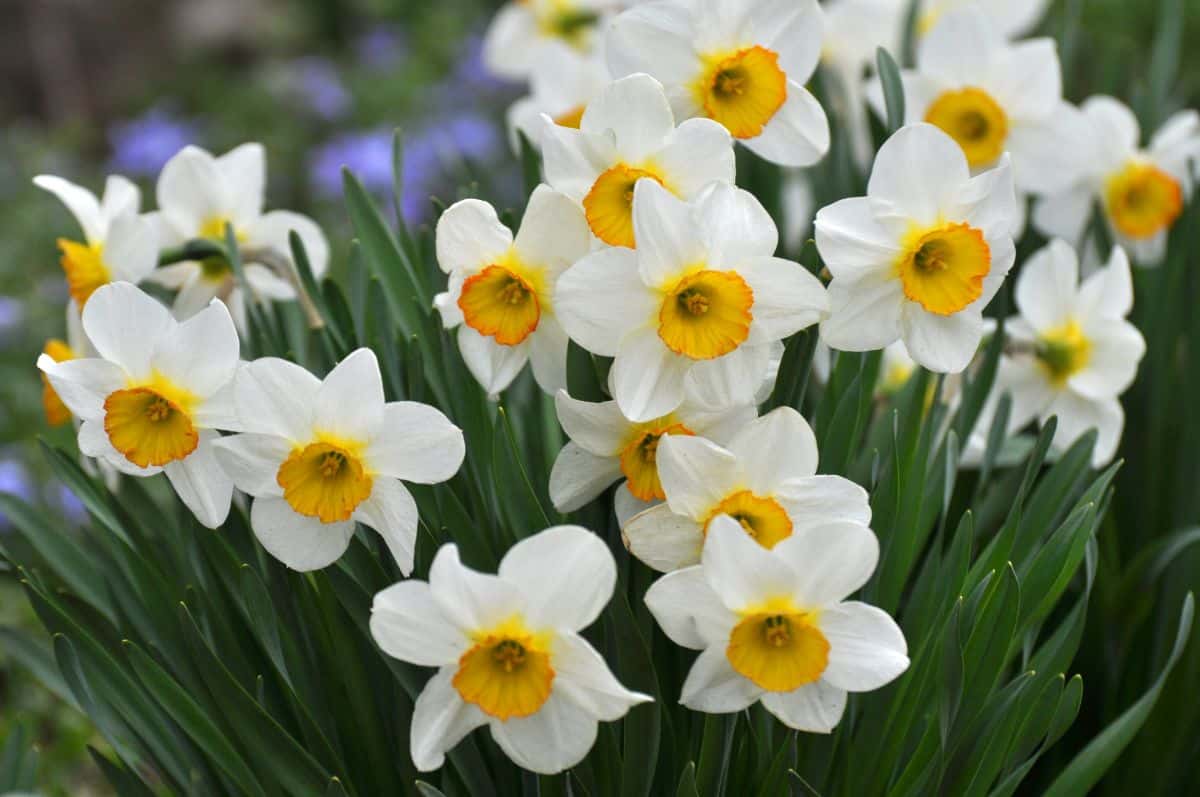
| Plant Type | Perrenial flowering plant |
| Native Region | North Africa, Europe, Western Asia, Mediterranean |
| Sun/ Light | Full sun |
| Hardiness Zone | 4-6, USDA |
| Water | Light-moderate |
| Soil | Well-drained |
| Bloom | Late winter, early spring |
| Foliage Color | Green |
| Flower Color | Yellow, orange, white |
| Size | Height: 6-30 in. |
| When to Plant Seeds | Autumn |
Interesting fact: Daffodils were highly regarded by ancient Romans who believed their sap contained healing properties.
26.) Daylilies (Hemerocallis fulva)
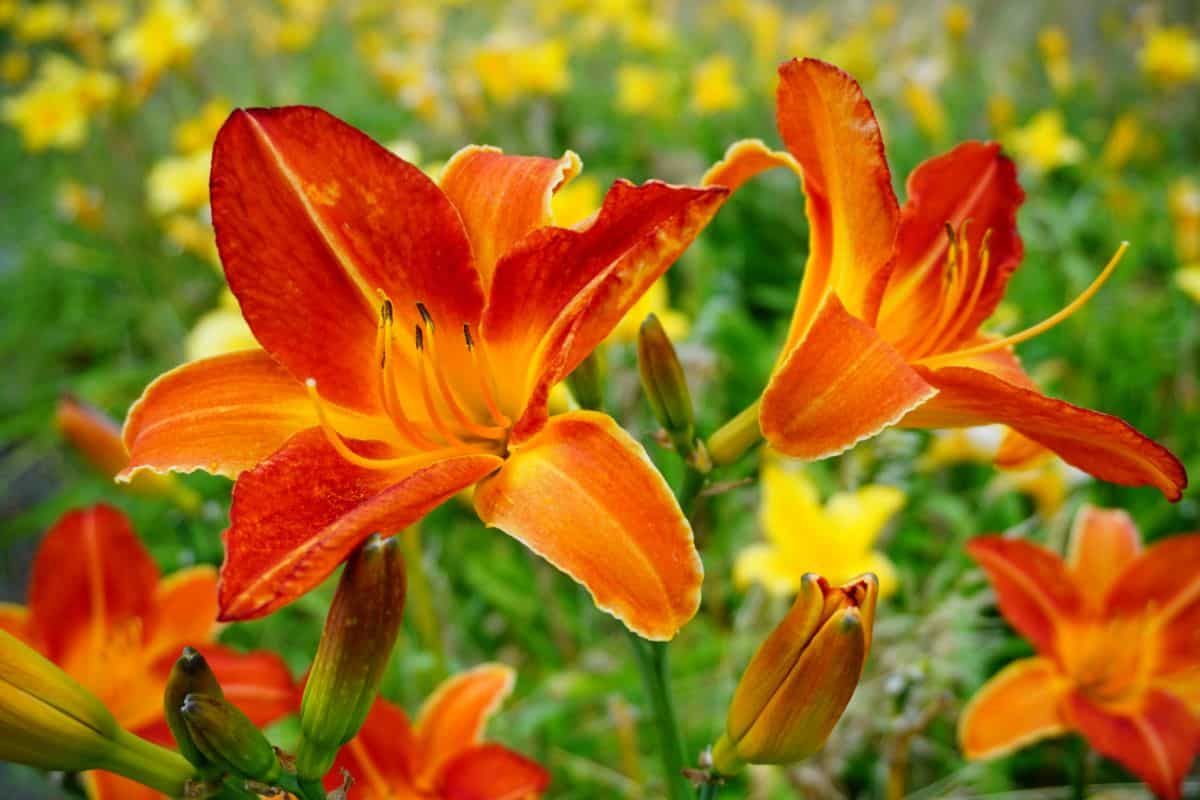
| Plant Type | Perrenial flowering plant |
| Native Region | Asia |
| Sun/ Light | Full sun |
| Hardiness Zone | 4-9, USDA |
| Water | Moderate with more water in summer. |
| Soil | Rich, well-drained |
| Bloom | Mid-spring |
| Foliage Color | Green |
| Flower Color | Yellow, red, pink, purple, melon |
| Size | Height: 12-48 in. |
| When to Plant Seeds | Spring |
Interesting fact: Daylillies are not a type of lily and grow from tubers rather than from bulbs.
27.) Lupines (Lupinus)

| Plant Type | Annual or short-lived perennial flower |
| Native Region | Mediterranean, Americas, Africa |
| Sun/ Light | Full sun |
| Hardiness Zone | 4-8, USDA |
| Water | Moderate. Let dry in between watering. |
| Soil | Loose and sandy |
| Bloom | Late spring to mid-summer |
| Foliage Color | Green |
| Flower Color | Blue, yellow, white, pink, purple |
| Size | Height: 1-5 ft. |
| When to Plant Seeds | Spring or early autumn |
Interesting fact: This flower attracts pollinators including bees and hummingbirds as well as repels deer.
28.) Wax Begonias (Begonia x semperflorens-cultorum)
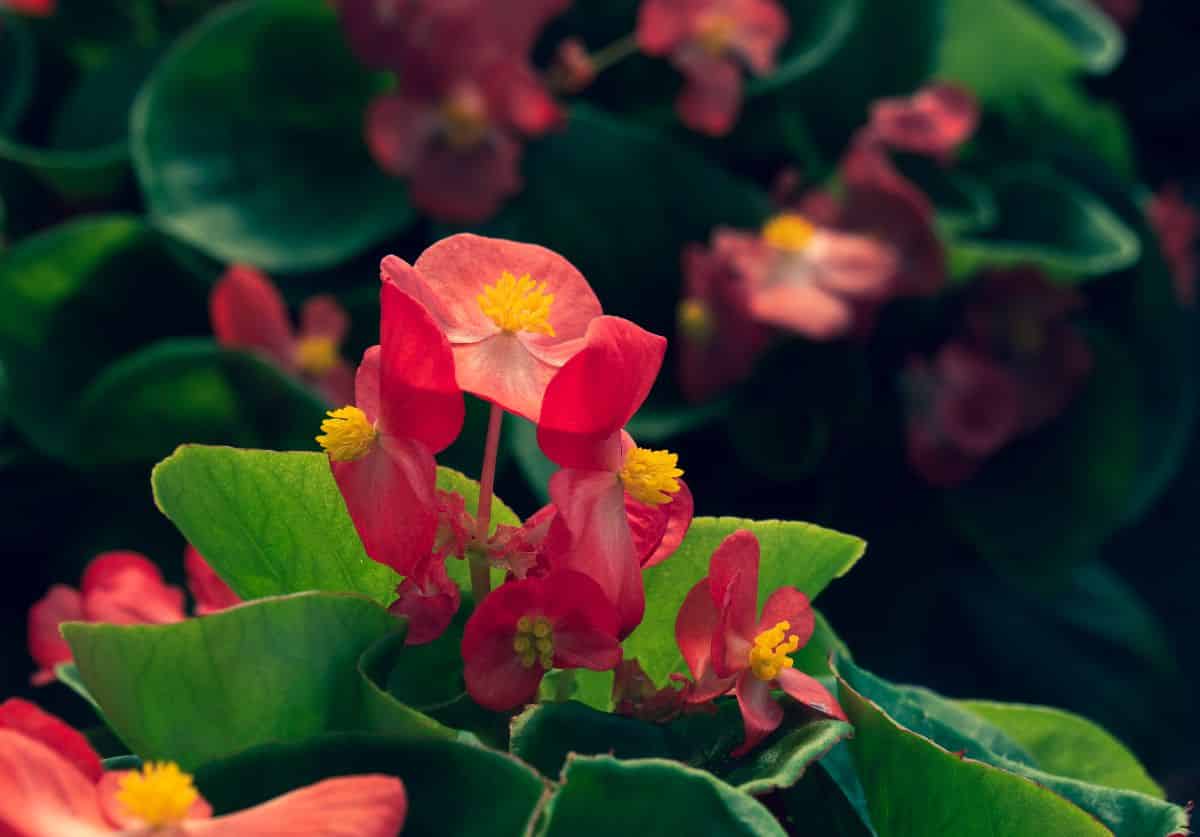
| Plant Type | Herbaceous perennial flower |
| Native Region | Tropical & subtropical climates |
| Sun/ Light | Partial sun / shade |
| Hardiness Zone | 10-11, USDA |
| Water | Moderate |
| Soil | Well-drained |
| Bloom | Summer and autumn |
| Foliage Color | Green |
| Flower Color | Pink, white, orange, yellow |
| Size | Height: 6-12 in. |
| When to Plant Seeds | Mid to late January |
Interesting fact: At one time in history, begonias were used to polish swords leaving the blades with a shiny finish.
29.) Pansies (Viola tricolor var. hortensis)
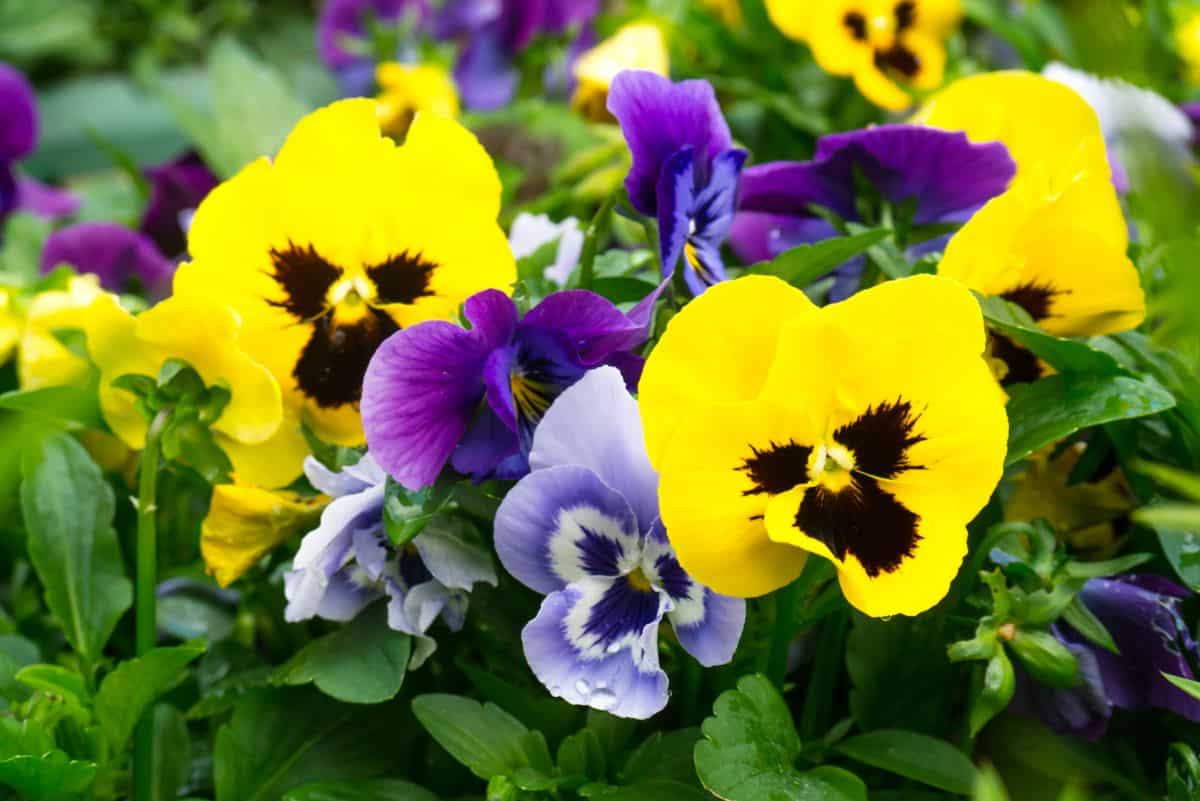
| Plant Type | Annual hybrid flowering plant |
| Native Region | North America and Europe |
| Sun/ Light | Light sun / partial shade |
| Hardiness Zone | 7-10, USDA / 4-6 USDA over winter |
| Water | Weekly, less with natural rain |
| Soil | Dry, well-drained |
| Bloom | Spring to summer in cooler climates and autumn Winter in warmer climates |
| Foliage Color | Green |
| Flower Color | White, yellow, purple, blue |
| Size | Height: 6-9 in. |
| When to Plant Seeds | Summer to early autumn |
Interesting fact: Pansies are hardy and disease-resistant with markings that look like faces.
30.) Impatiens (Impatiens balsamina)
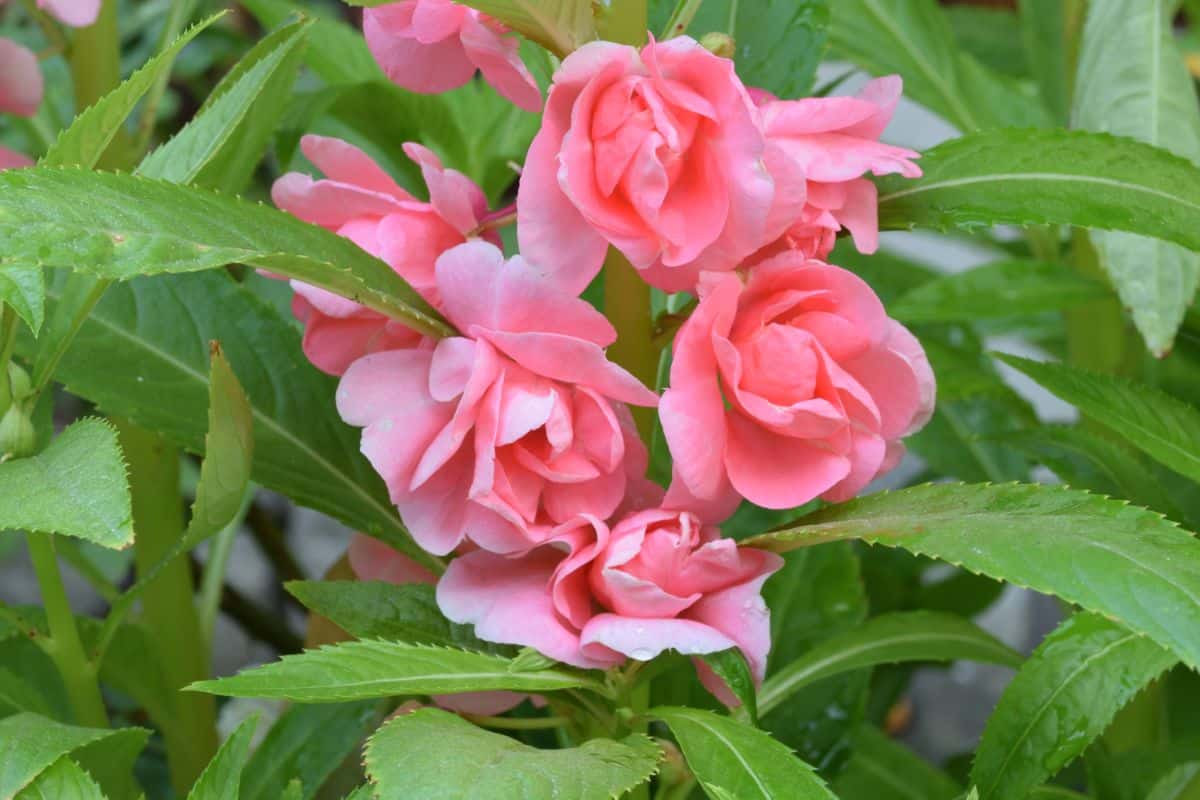
| Plant Type | Herbaceous annual / perennial flowering plant |
| Native Region | Africa |
| Sun/ Light | Partial / full shade |
| Hardiness Zone | 10-11, USDA |
| Water | Moderate |
| Soil | Moist, loamy soil |
| Bloom | June to the first frost |
| Foliage Color | Green to dark red |
| Flower Color | White, red, pink, violet, coral, purple, and yellow |
| Size | Height: 6-24 in. |
| When to Plant Seeds | Early to mid-February |
Interesting fact: Impatiens get their name from their manner of spreading their seeds which shoot from the pod when ripe.
31.) Carnation (Dianthus caryophyllus)
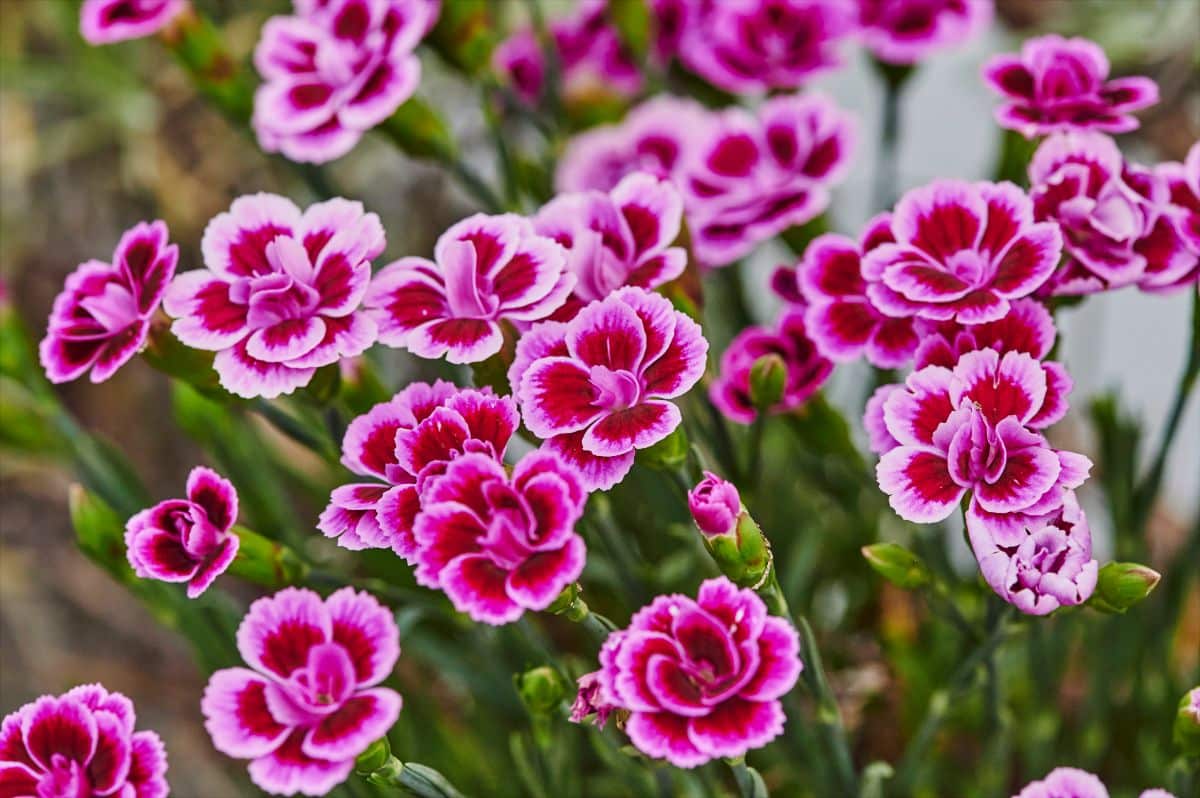
| Plant Type | Herbaceous annual/perennial |
| Native Region | Greece, Italy, Spain, and other Mediterranean countries |
| Sun/ Light | Partial / full shade |
| Hardiness Zone | 3-9, USDA |
| Water | Light water, water more in the summer |
| Soil | Well-drained. |
| Bloom | May to August |
| Foliage Color | Green, blue-green, silver-green |
| Flower Color | Red, purple, pink, white |
| Size | Height: 3-5 in. |
| When to Plant Seeds | Early spring or autumn |
Interesting fact: Carnations are known for their strong, spicy, and floral aroma with clove-like undertones.
Frequently Asked Questions (FAQ)
Here are some of the common questions regarding flowers and shrubs:
Most cases of rotting leaves are a sure sign of over-watering and a tell-tale sign of root rot. The best way to combat this is to help dry up the soil. You can do this by stirring up the soil with a screwdriver, stick, or pencil and avoiding overwatering.
Yellow leaves are often the first indicator that your plant is undergoing some type of stress. The most common causes of yellow leaves include:
Under-watering
Over-watering
Change in the environment
Lack of nutrients due to poor soil nutrients
Simply put, a hardiness zone refers to a region where a particular plant is known to thrive. The USDA sets aside each region using the annual minimum temperature as one of the factors. Plants may grow out of their hardiness zone but will require special intervention.
The best way to prevent rodents and deer from eating your prized flowers and shrubs is to strategically grow plants that are known to repel critters.
You can also spray susceptible plants with an all-natural animal repellent such as Natural Armor Animal & Rodent Repellent Spray.
Takeaway
This list is a great place to start if you are looking for some of the easiest shrubs and flowers to grow and maintain. Not only are these some of the lowest maintenance available, but they are also wildly popular among novice and experienced green thumbs alike from various hardiness zones.
Happy planting!

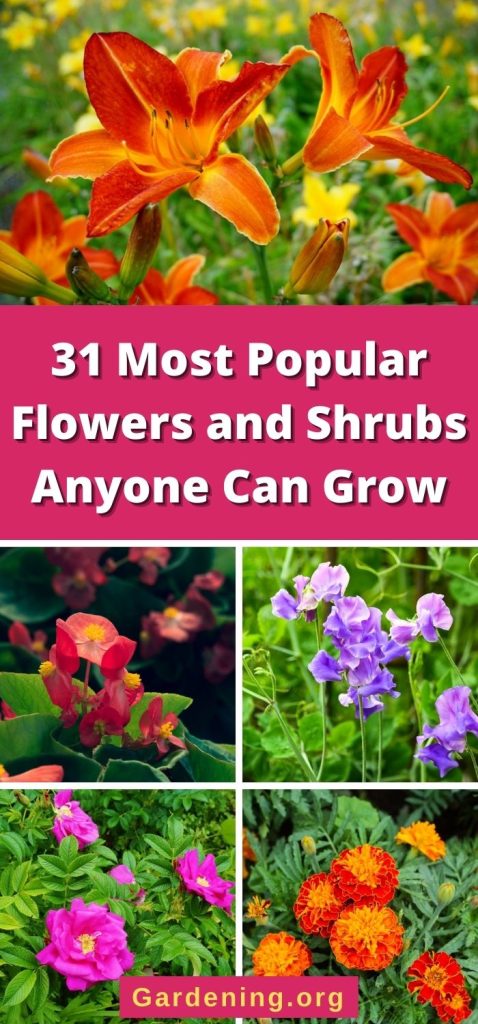

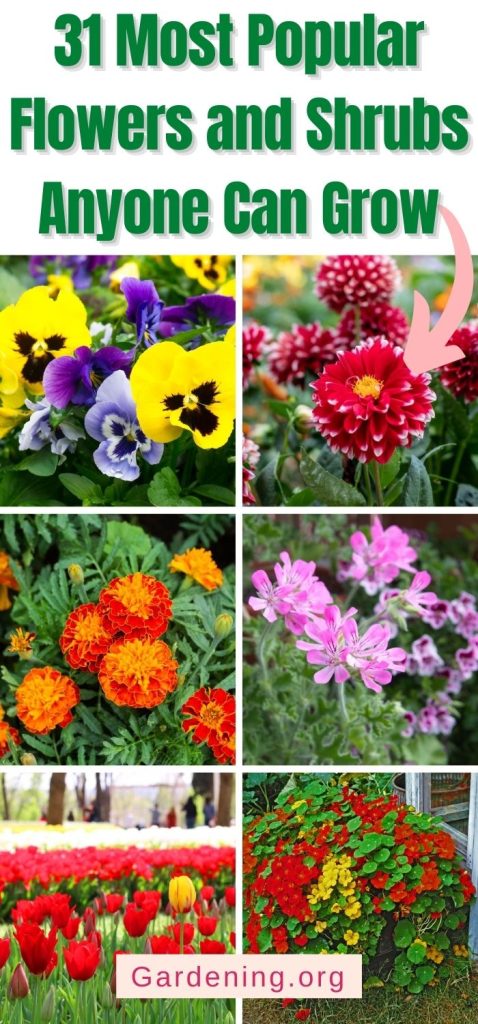
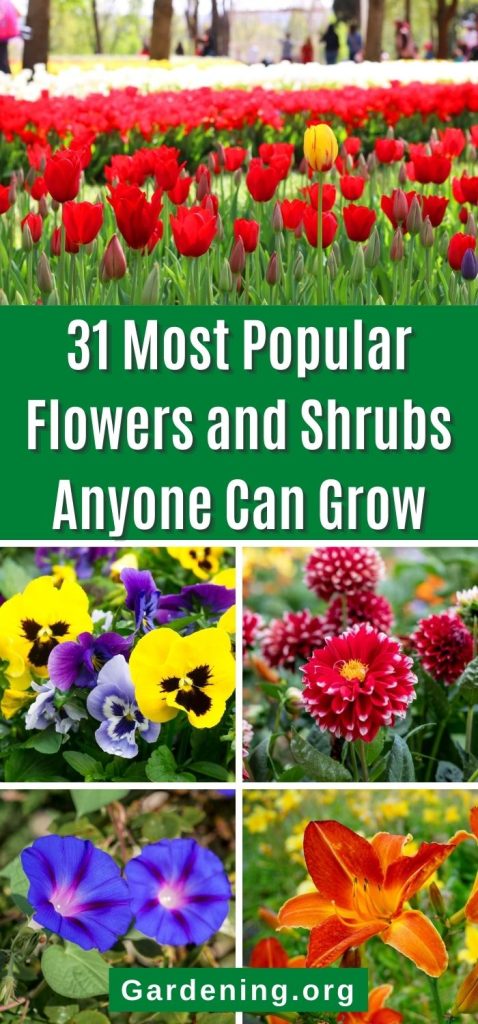

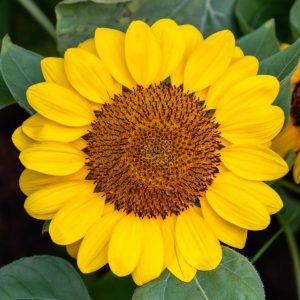
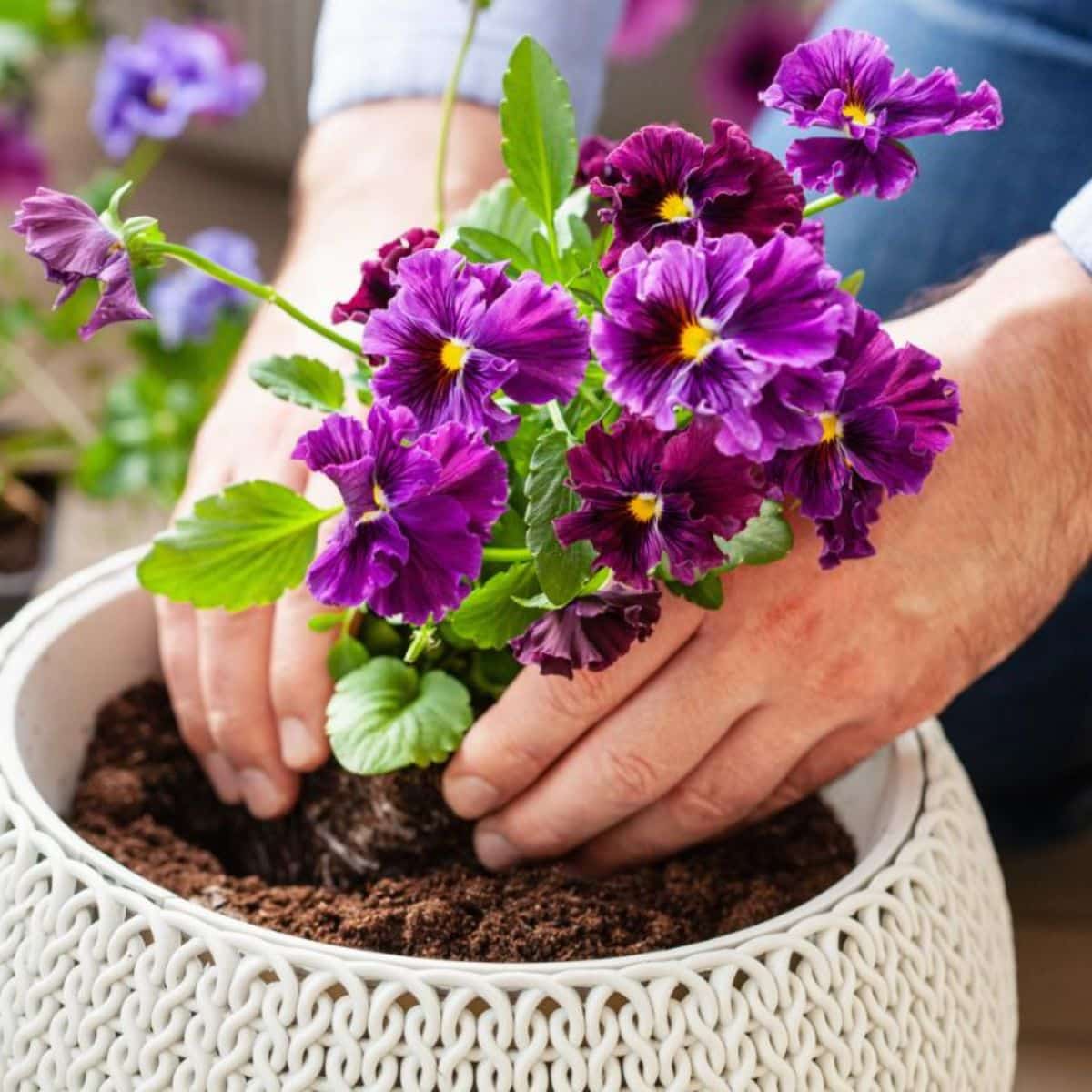
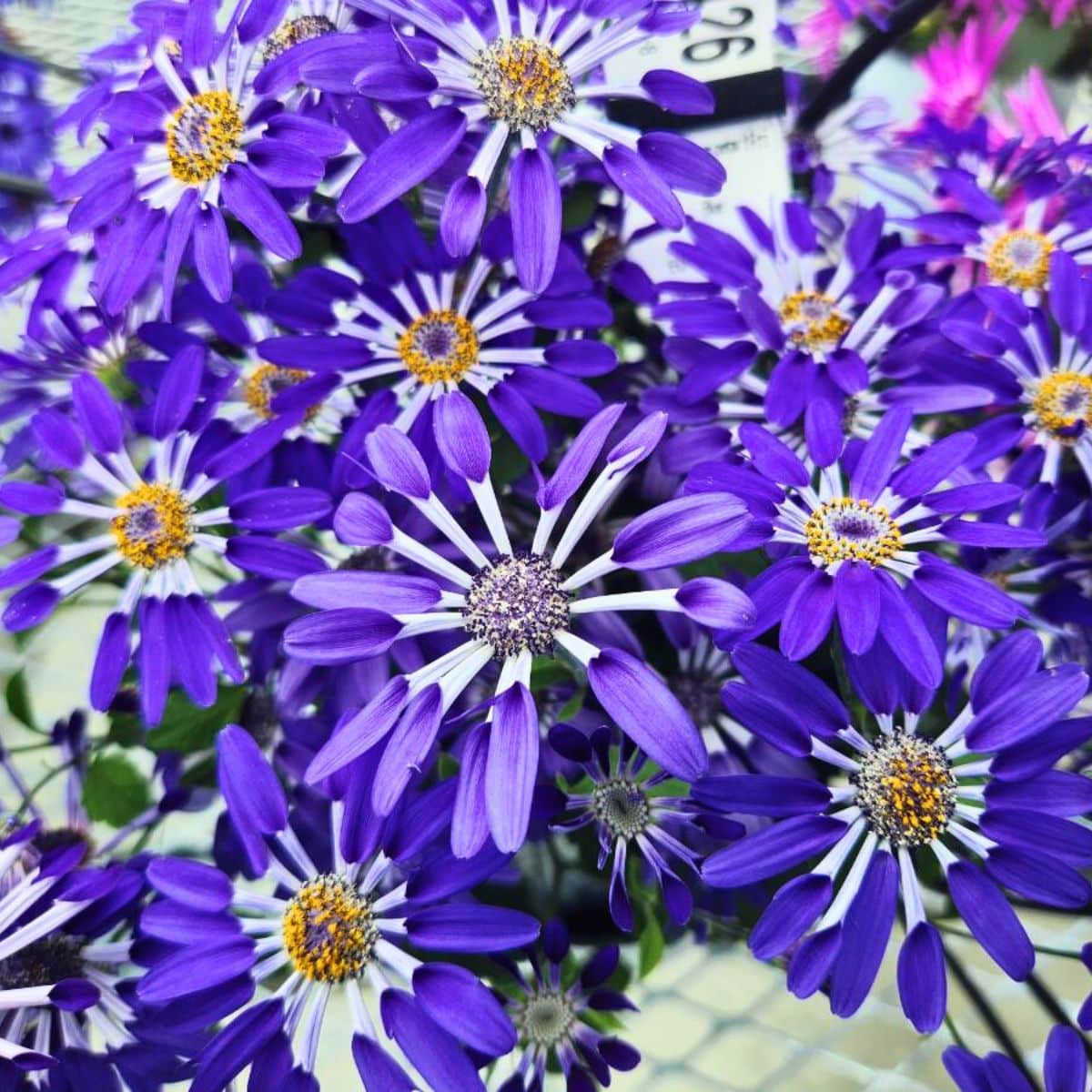
Leave a Reply